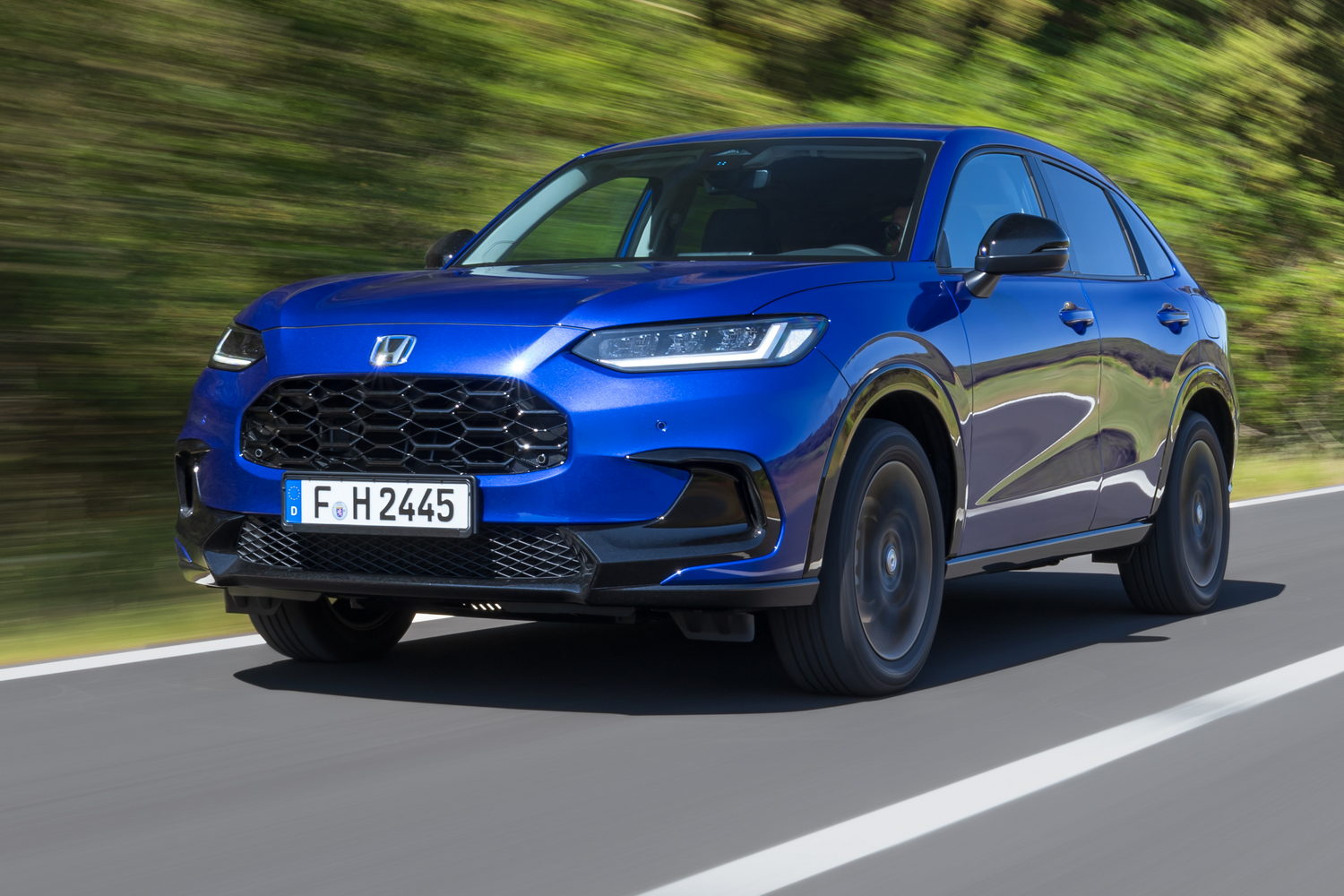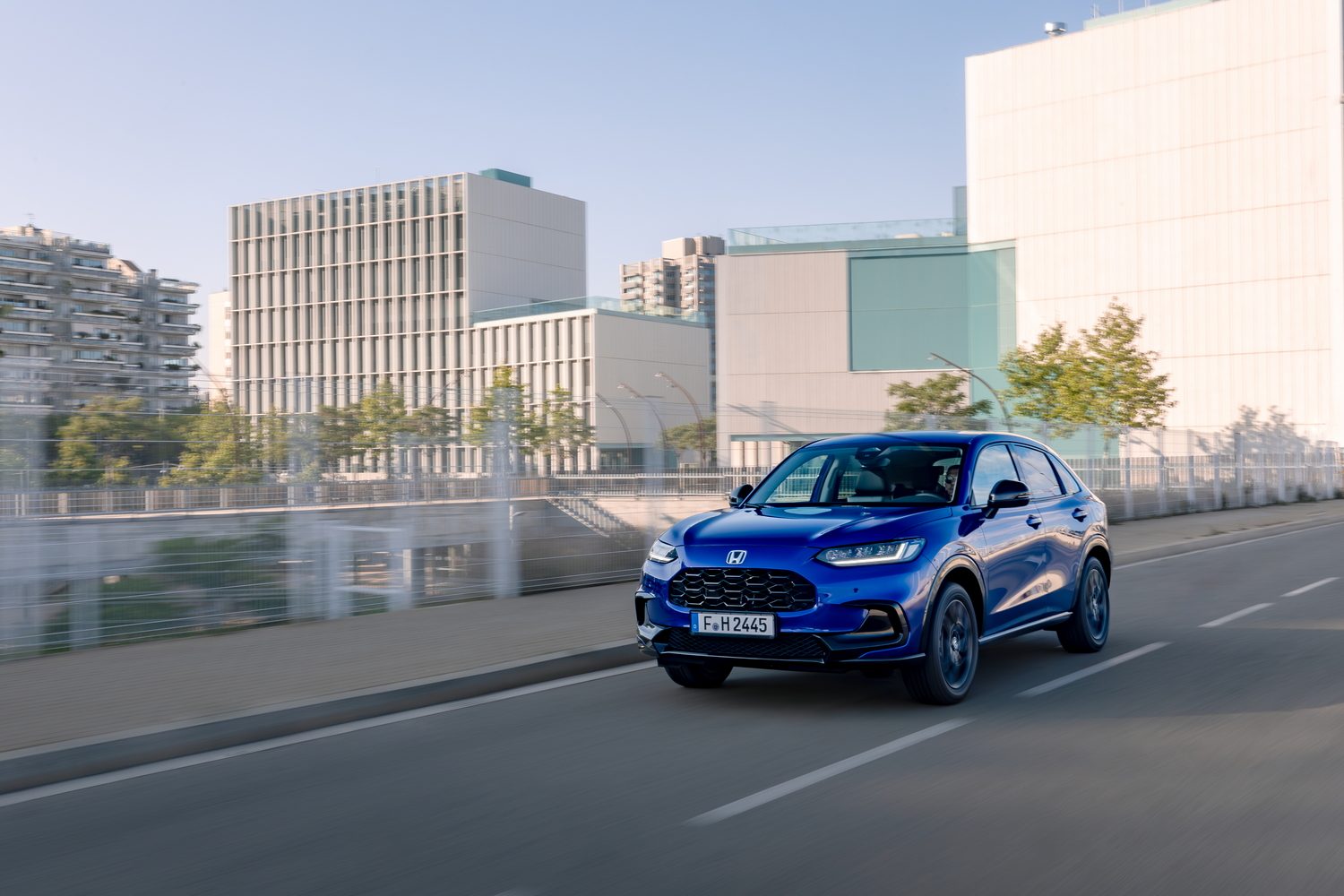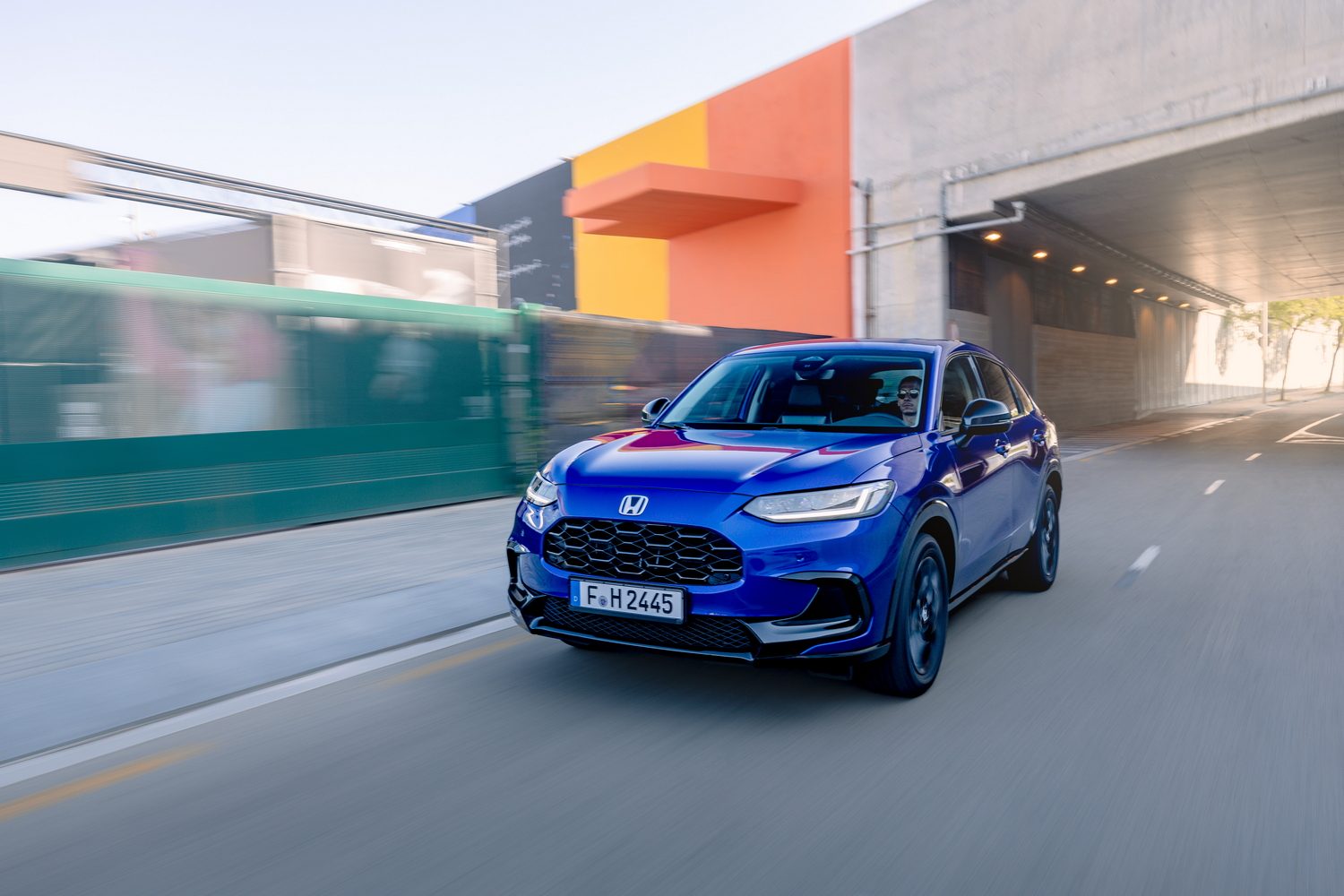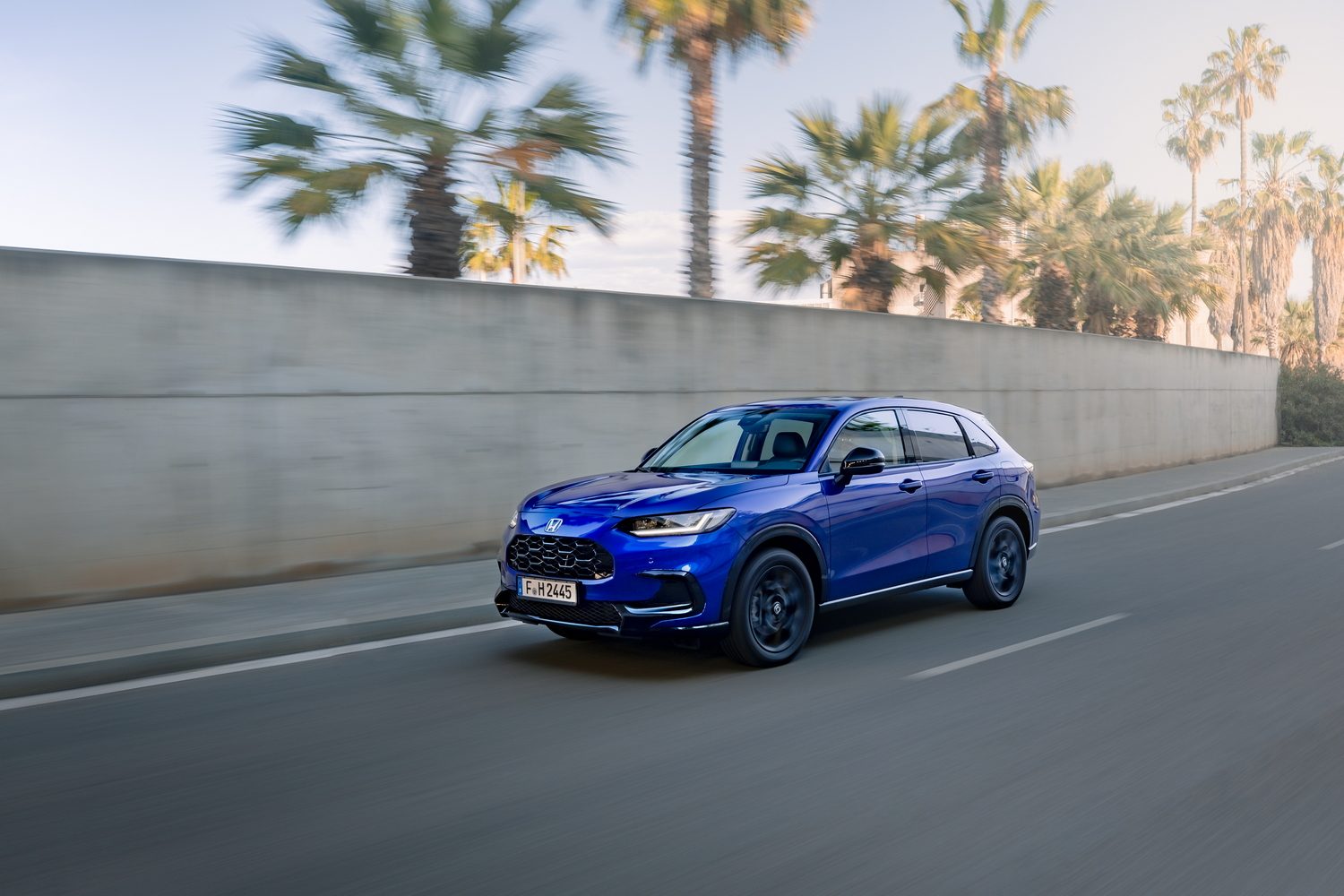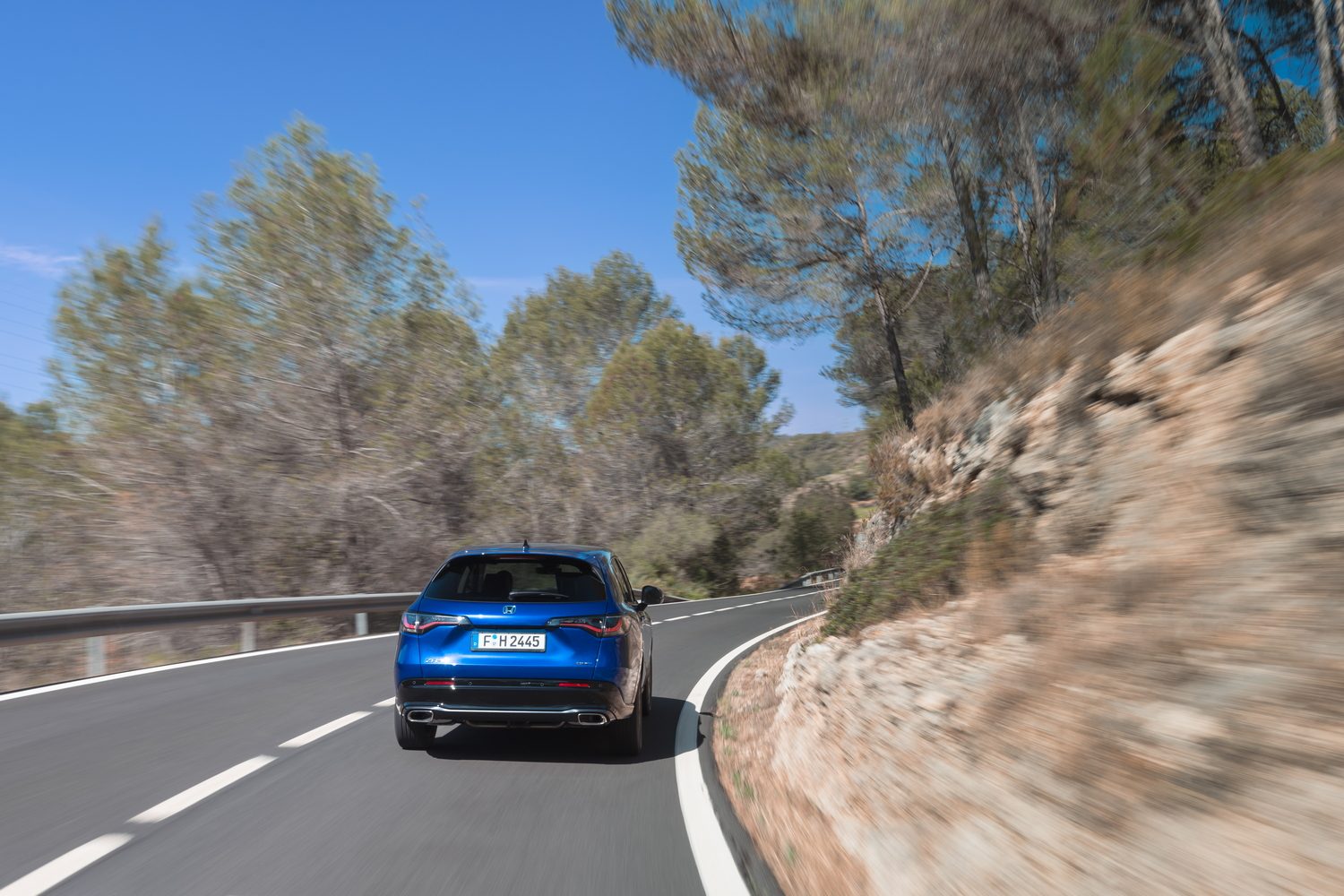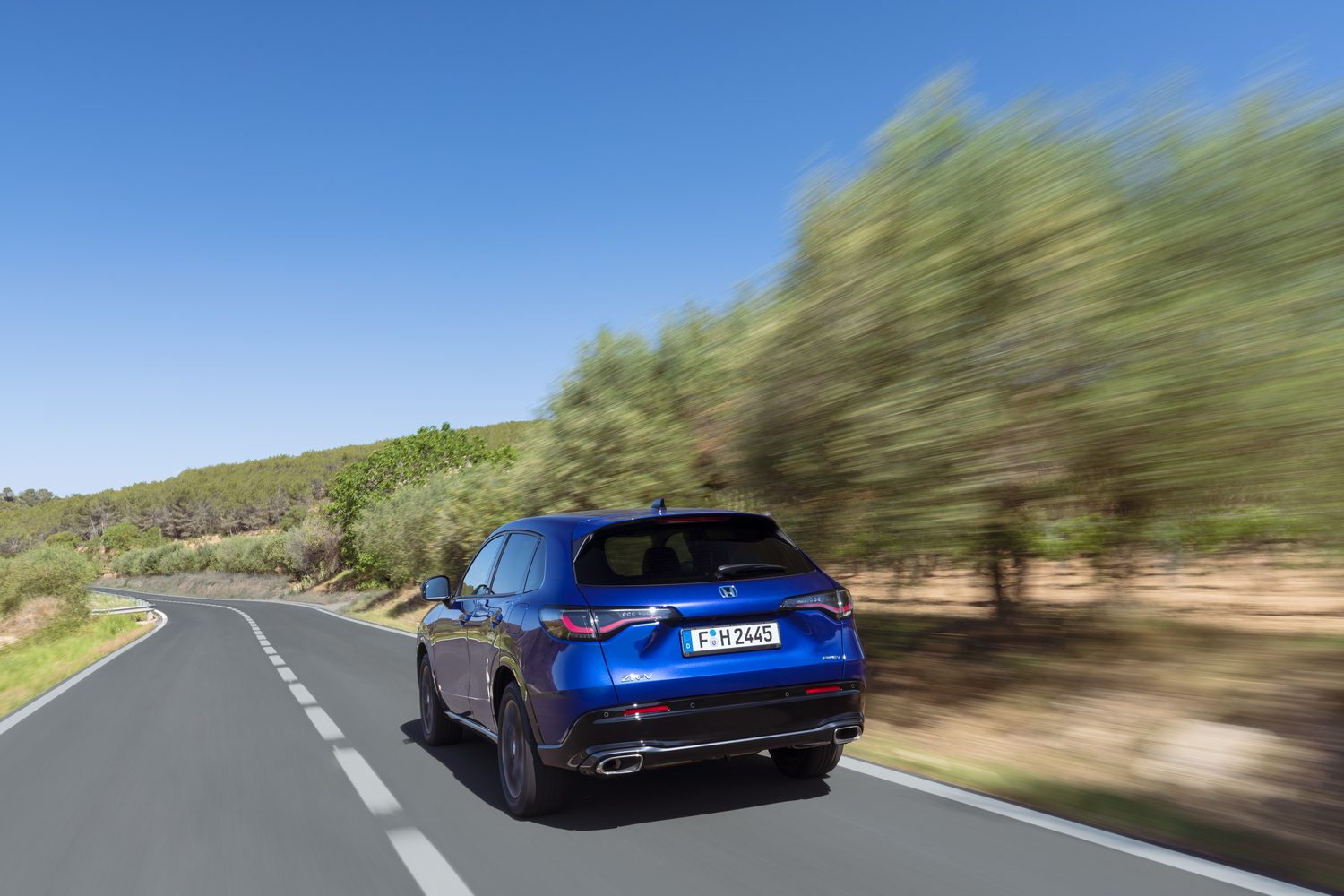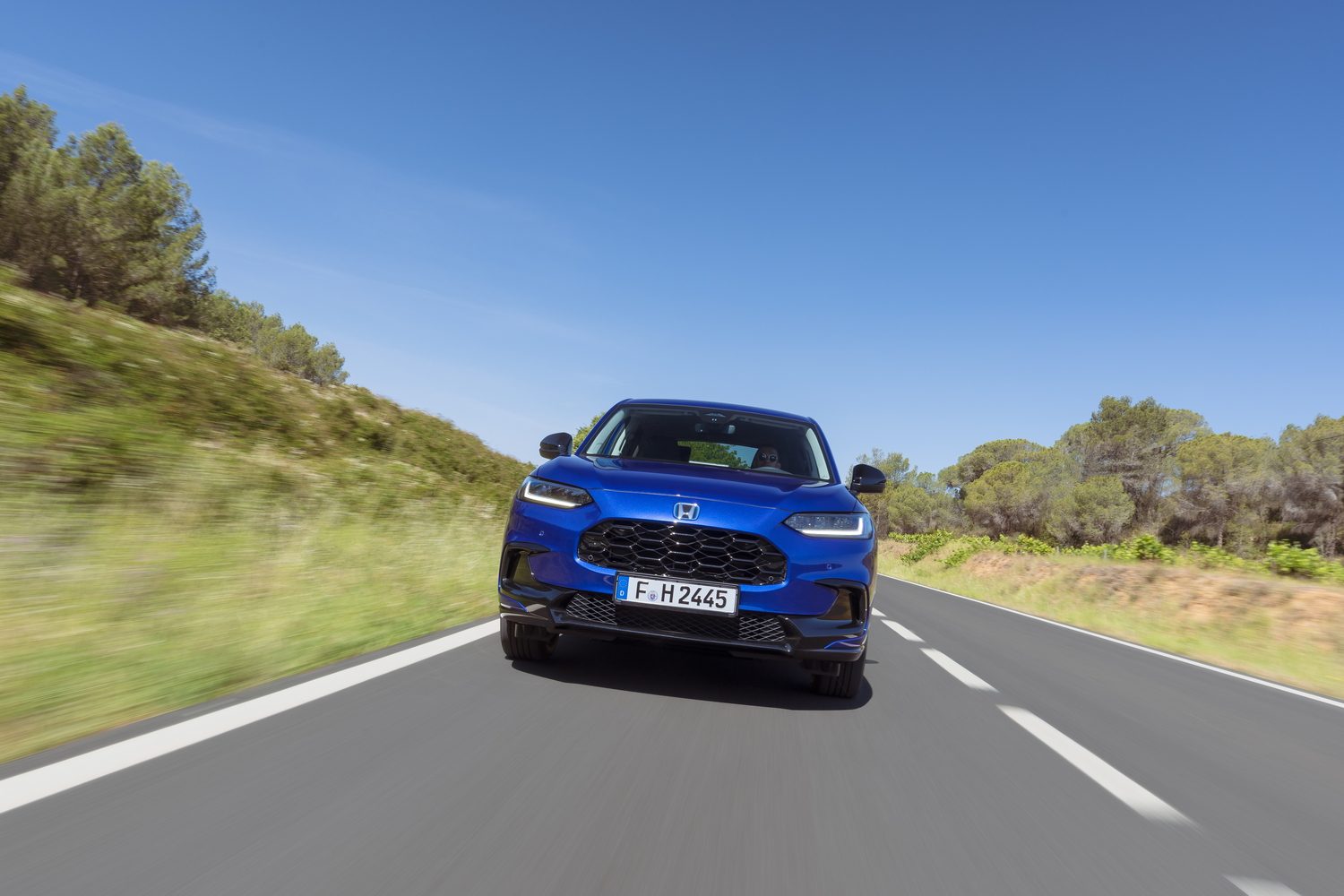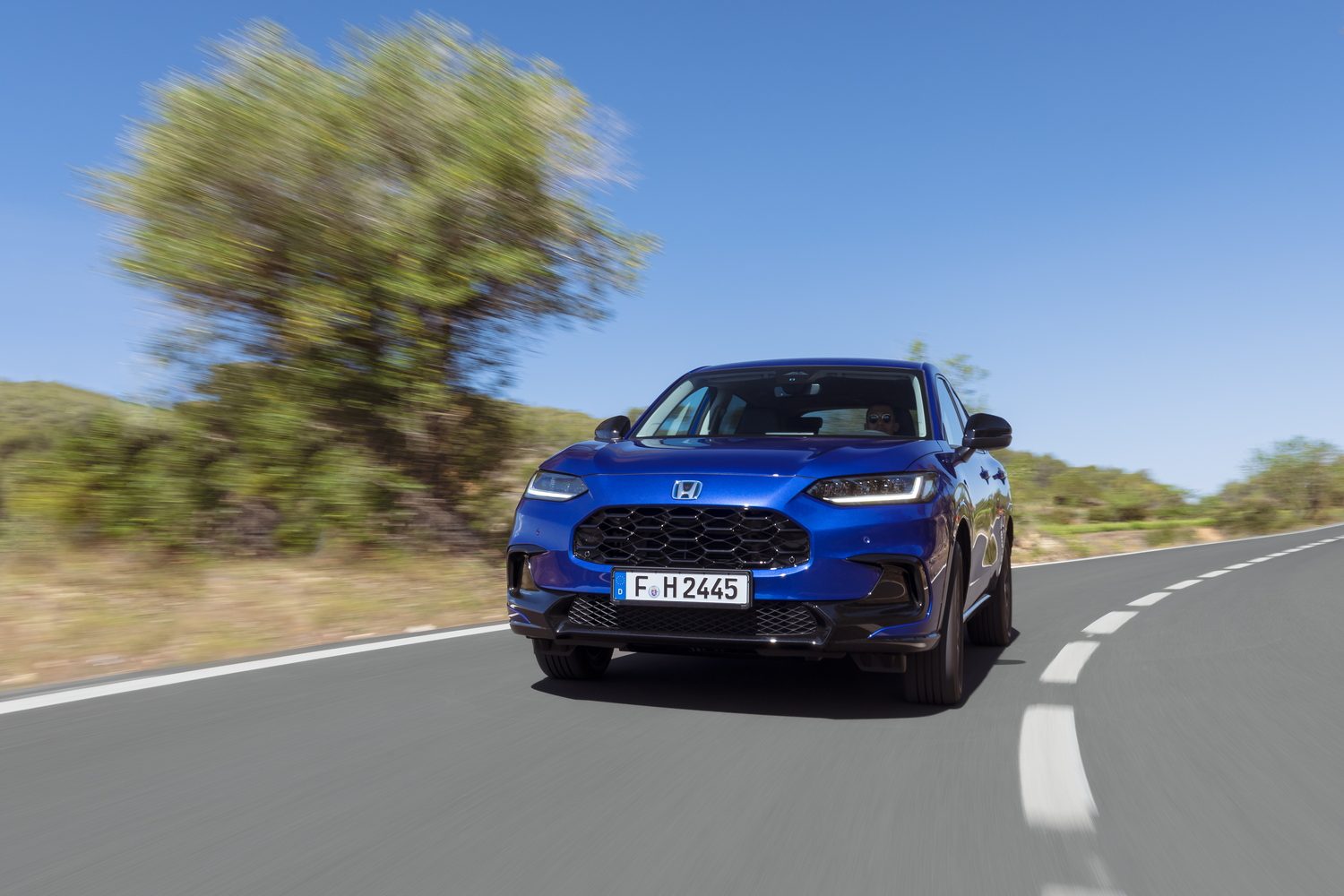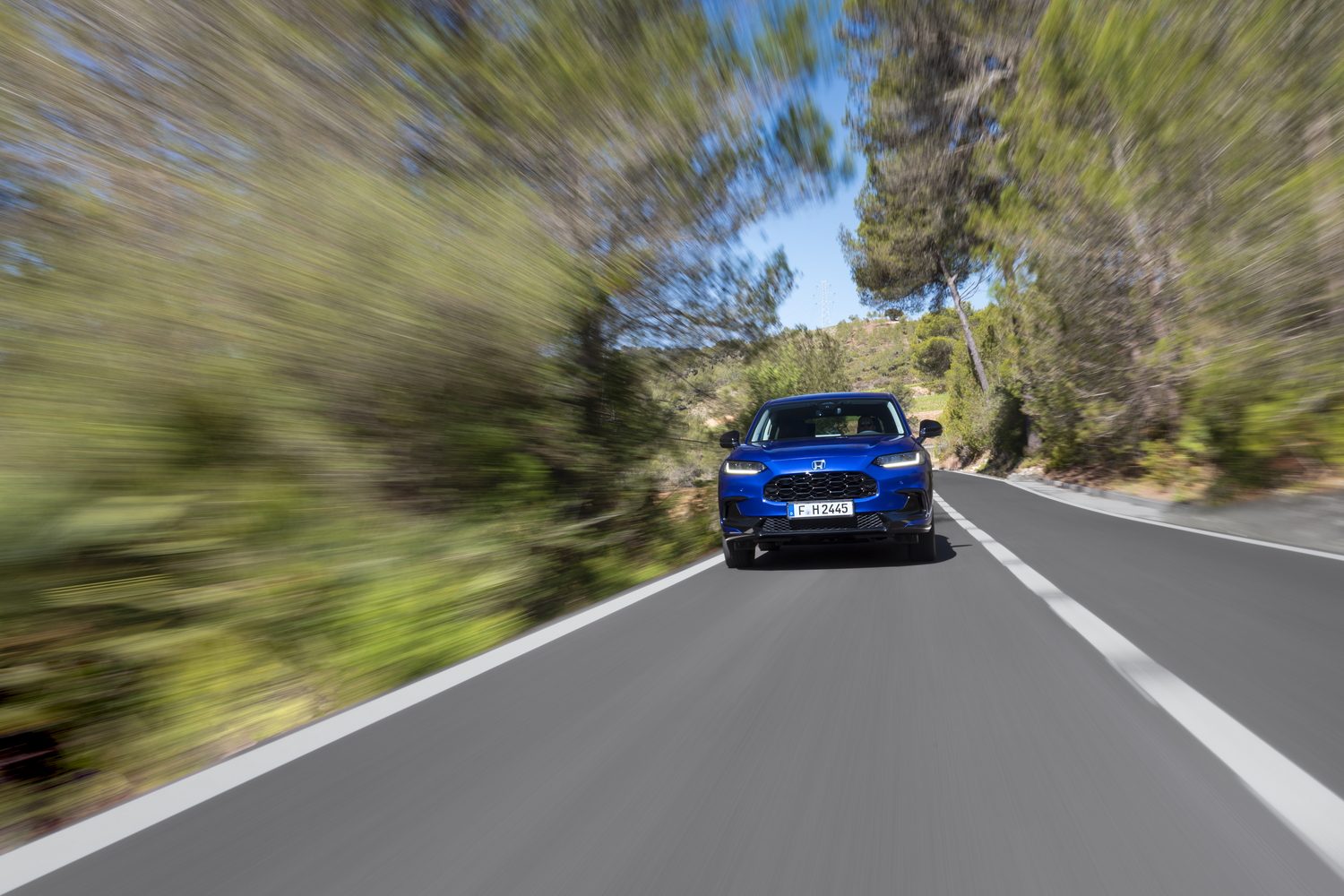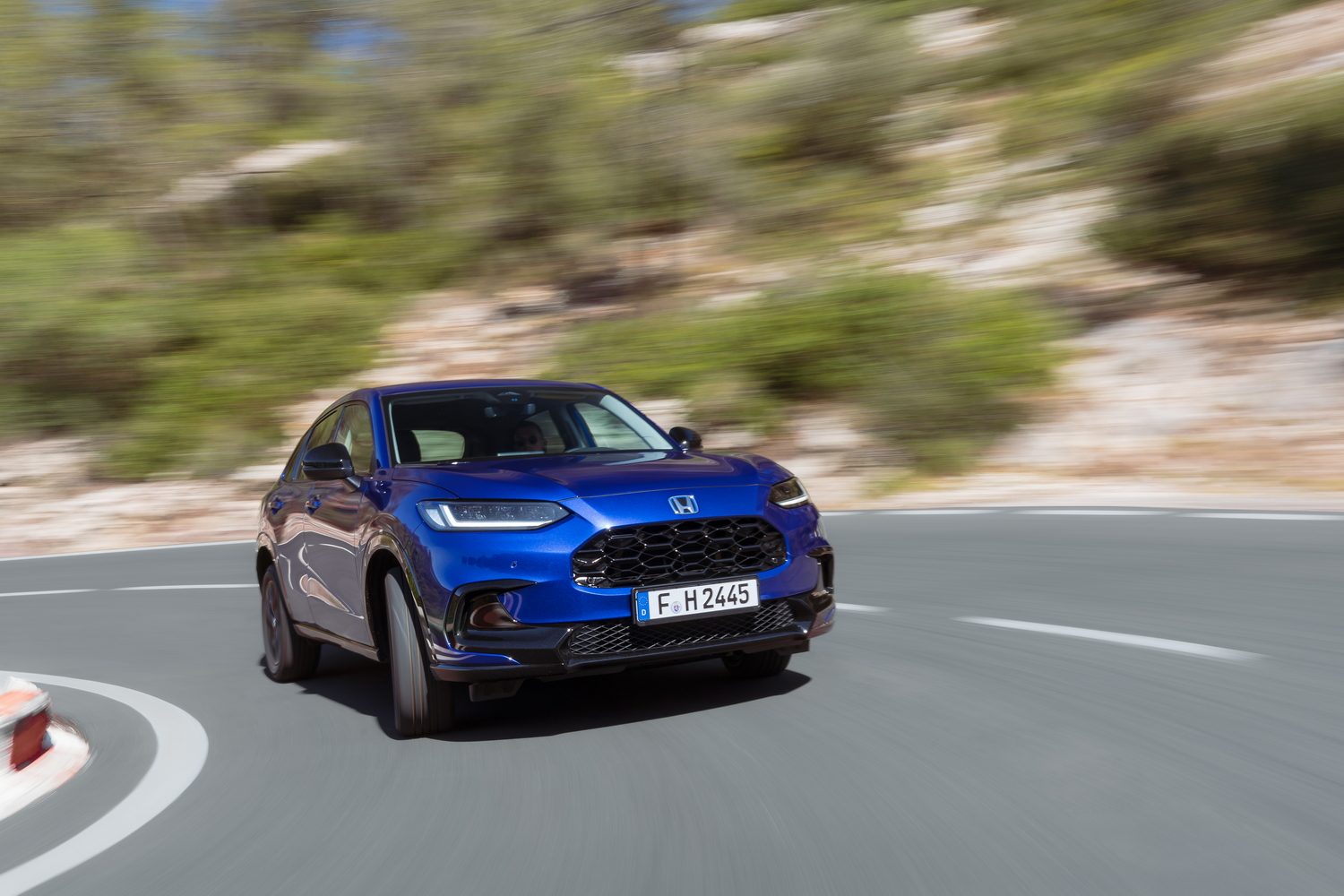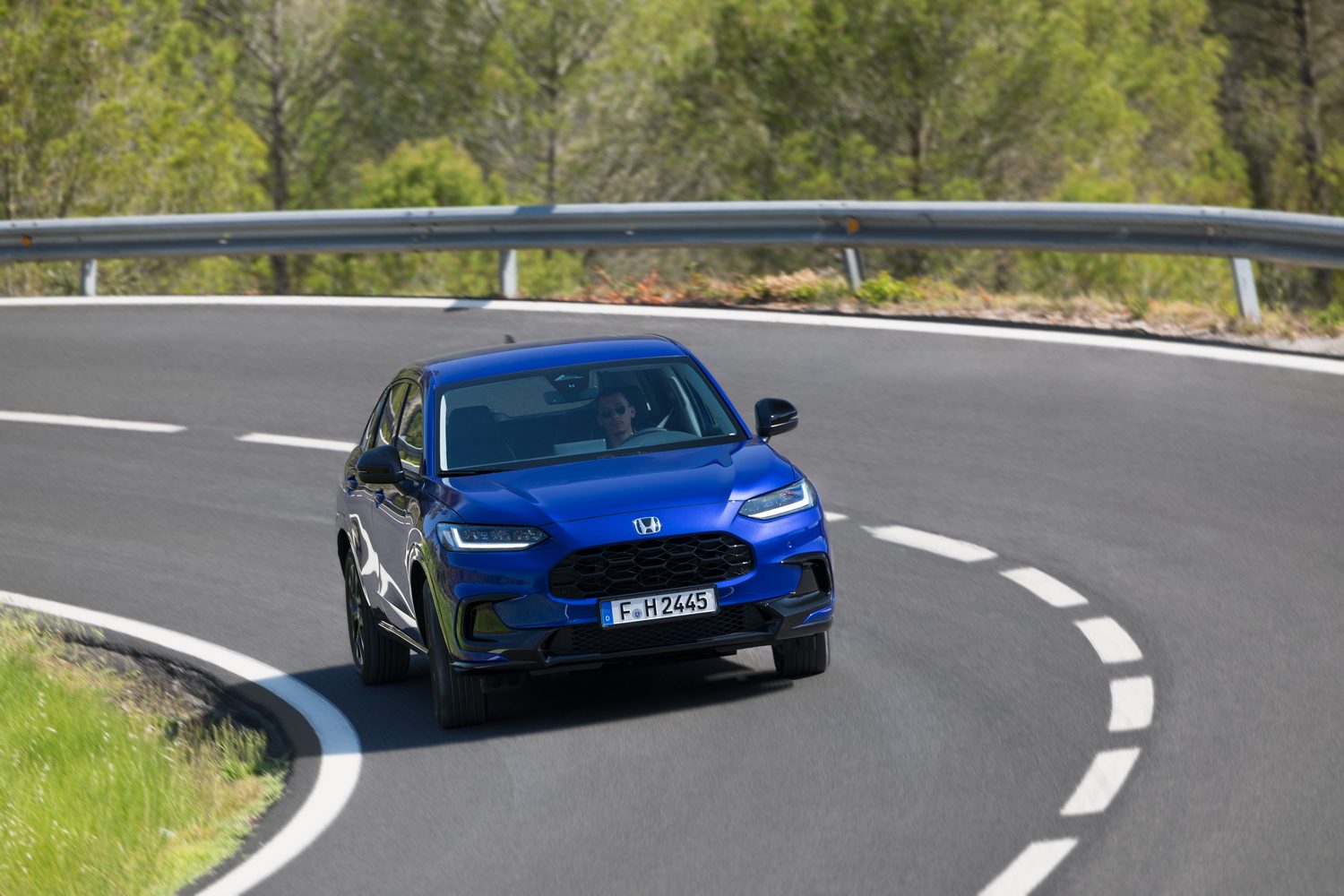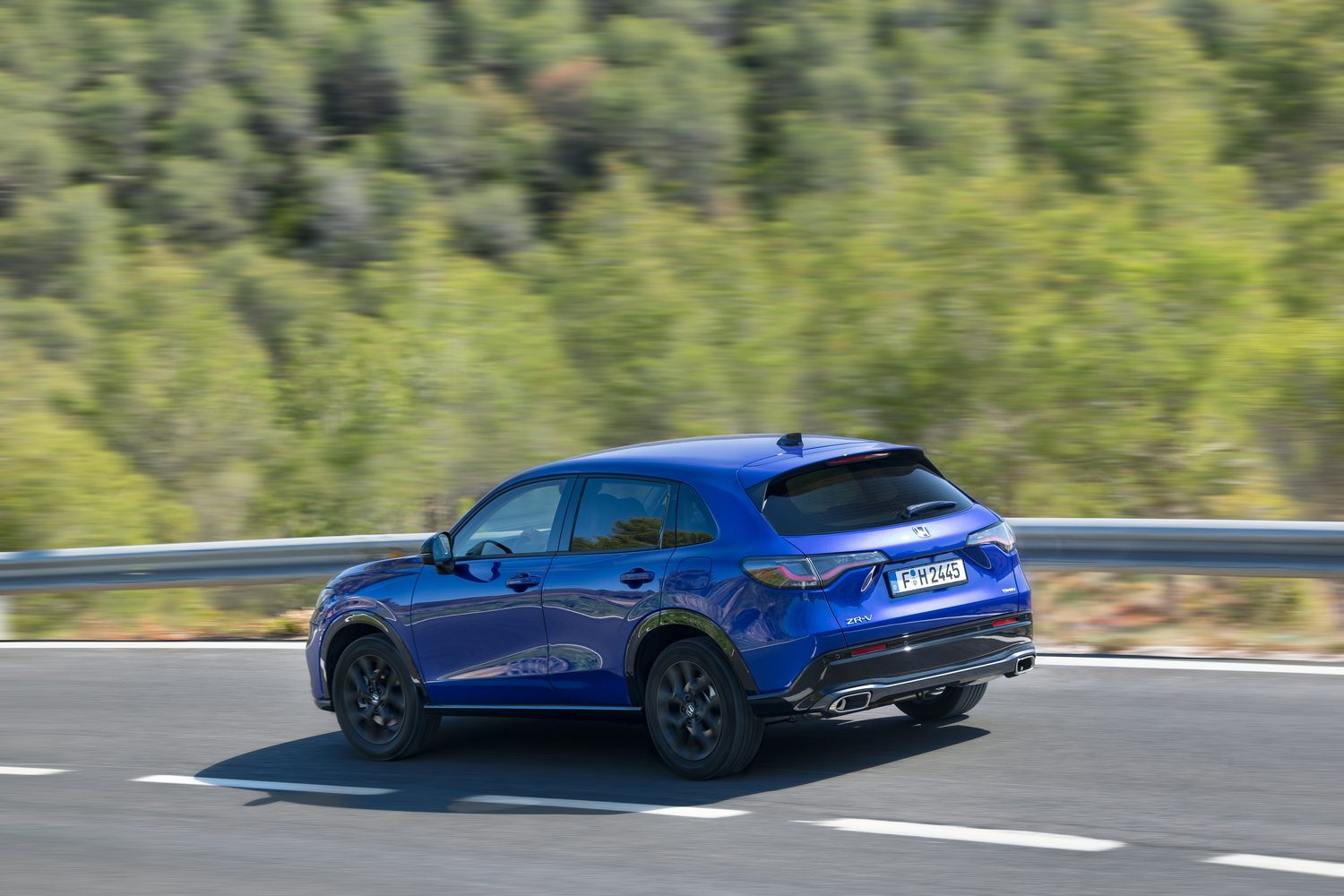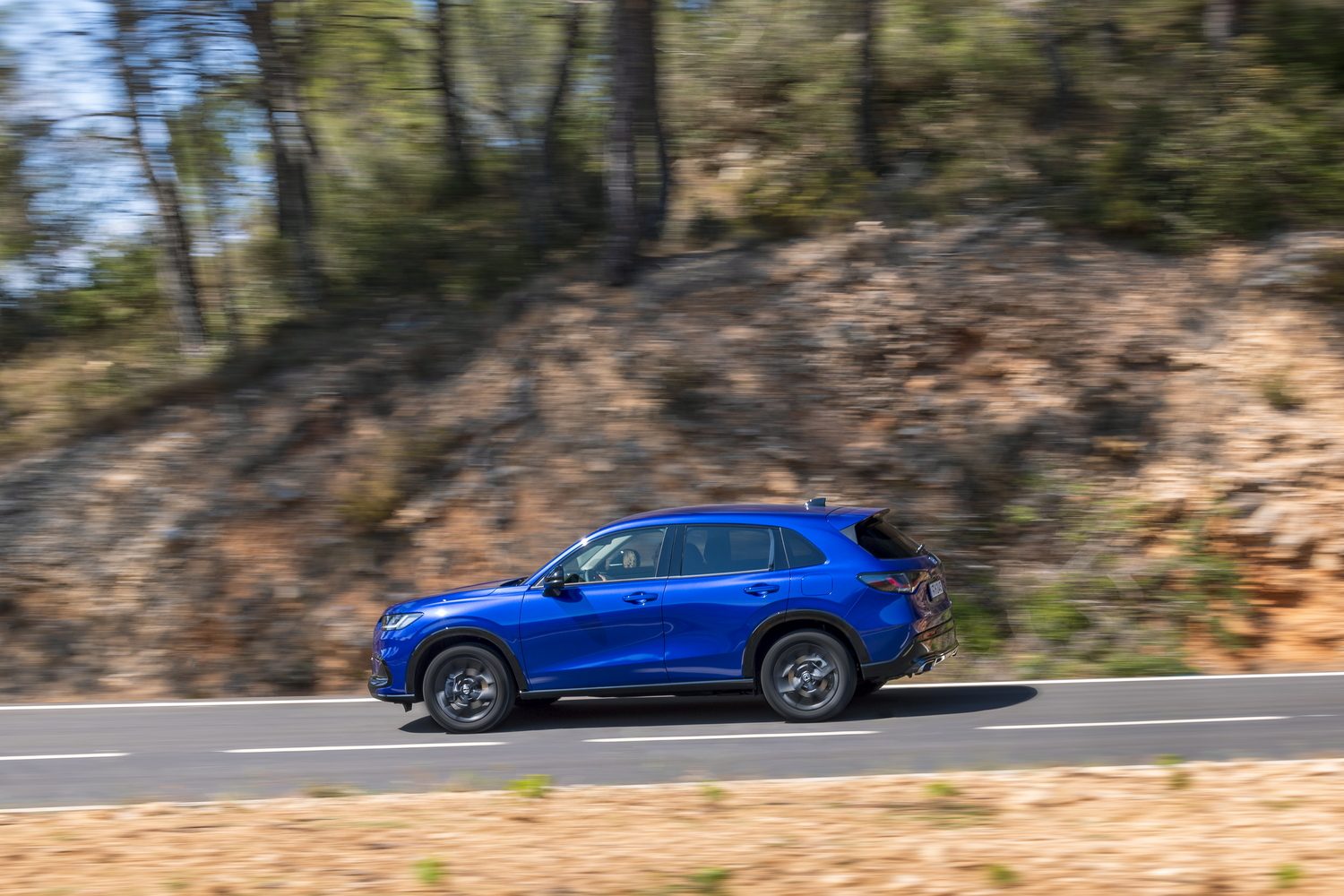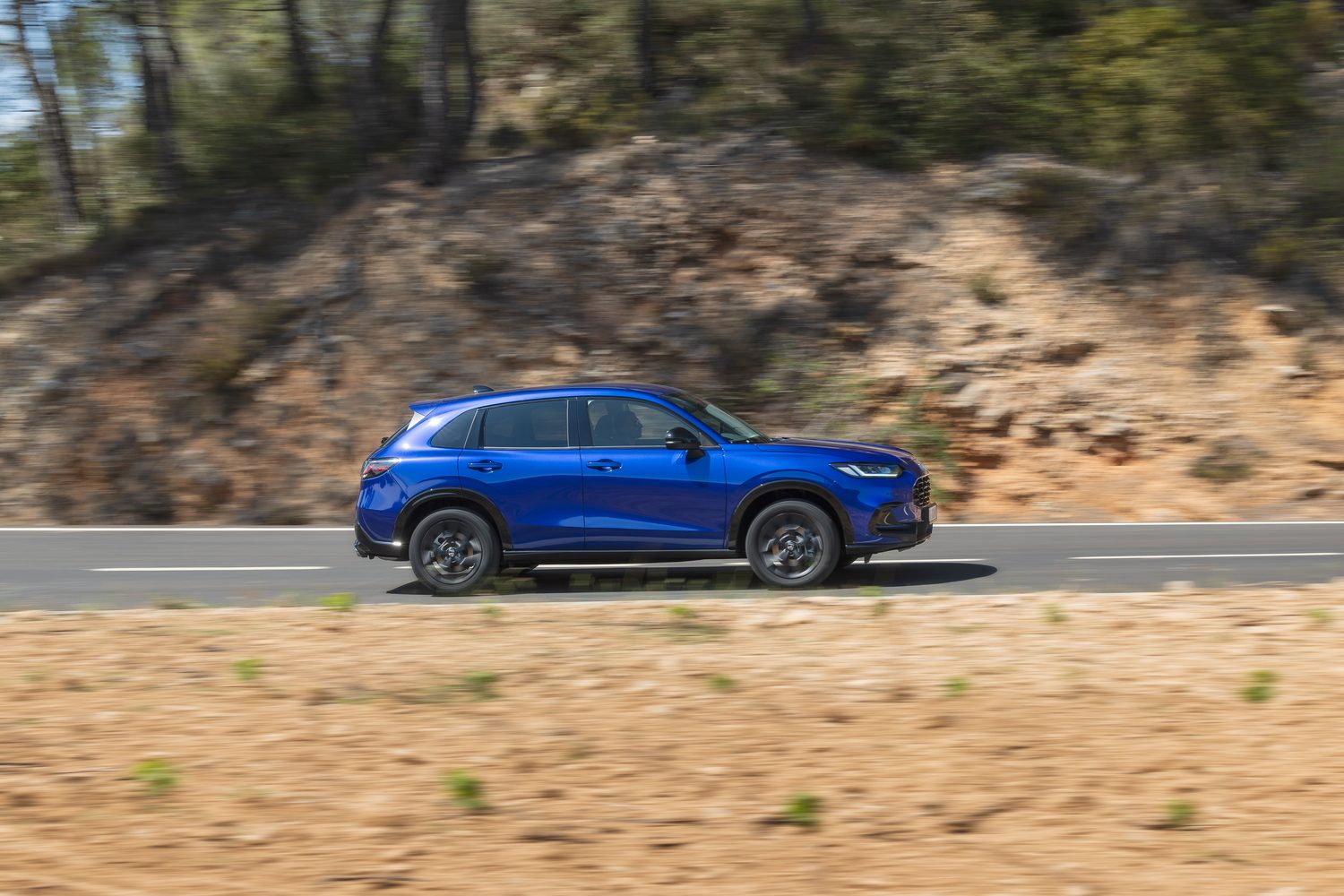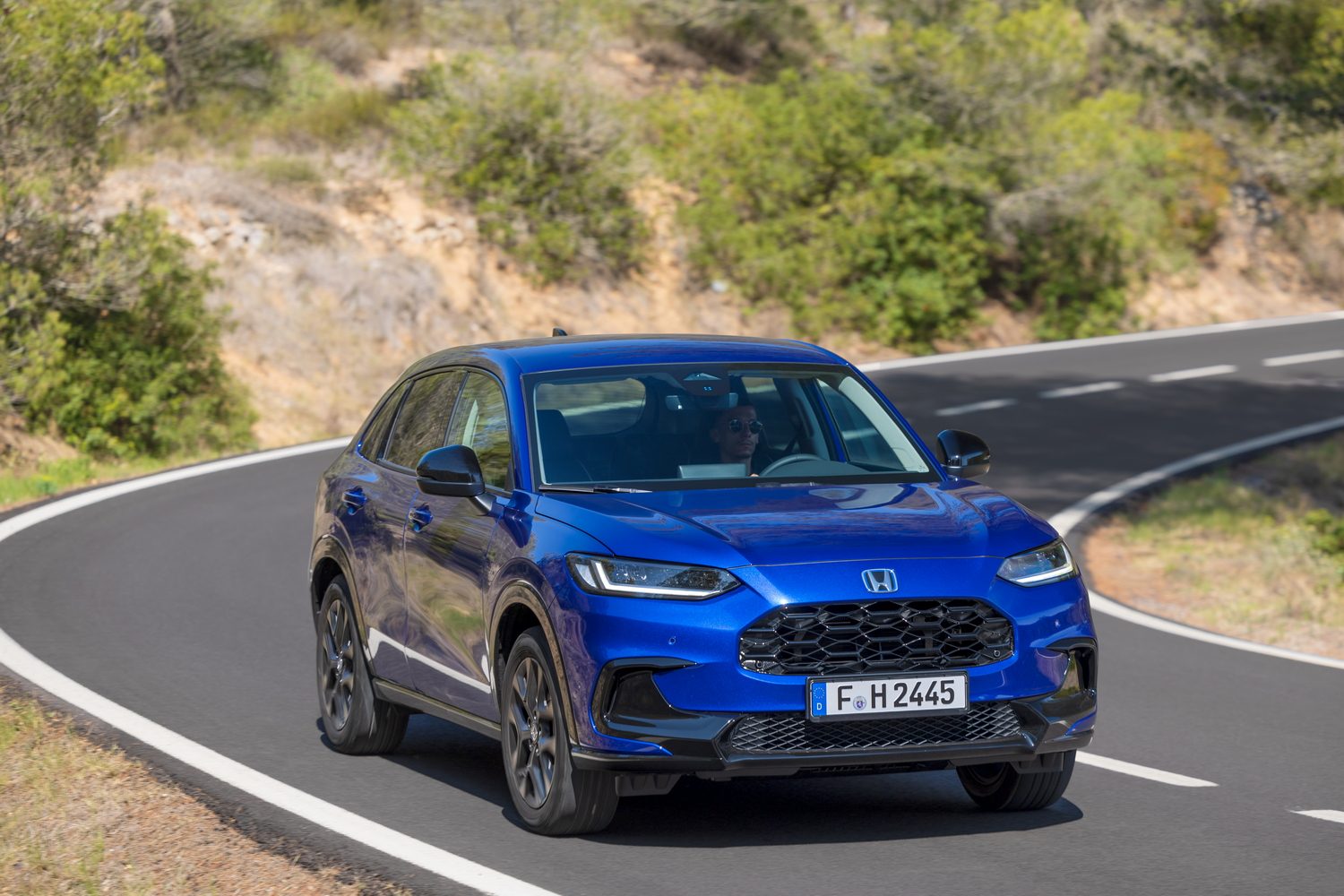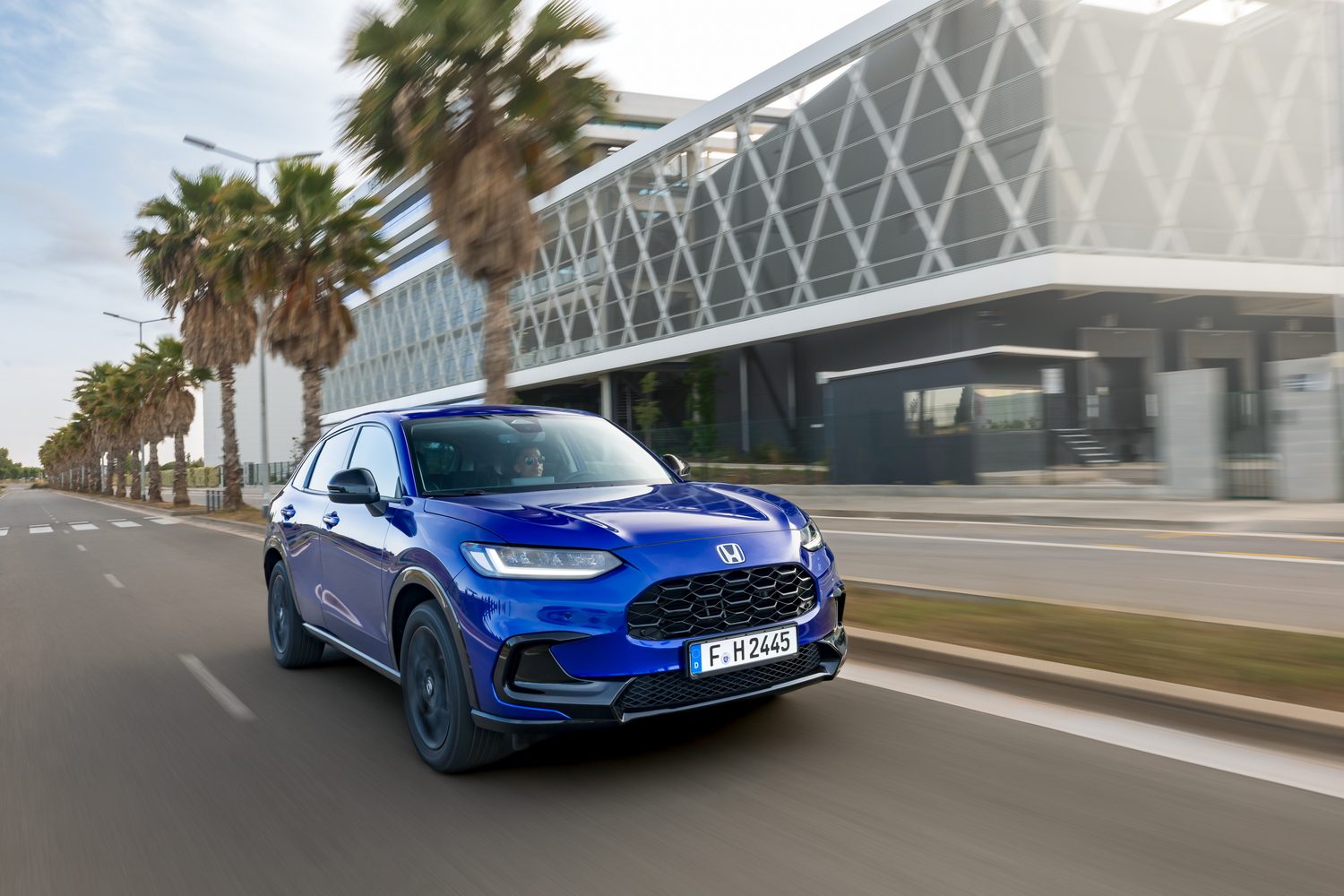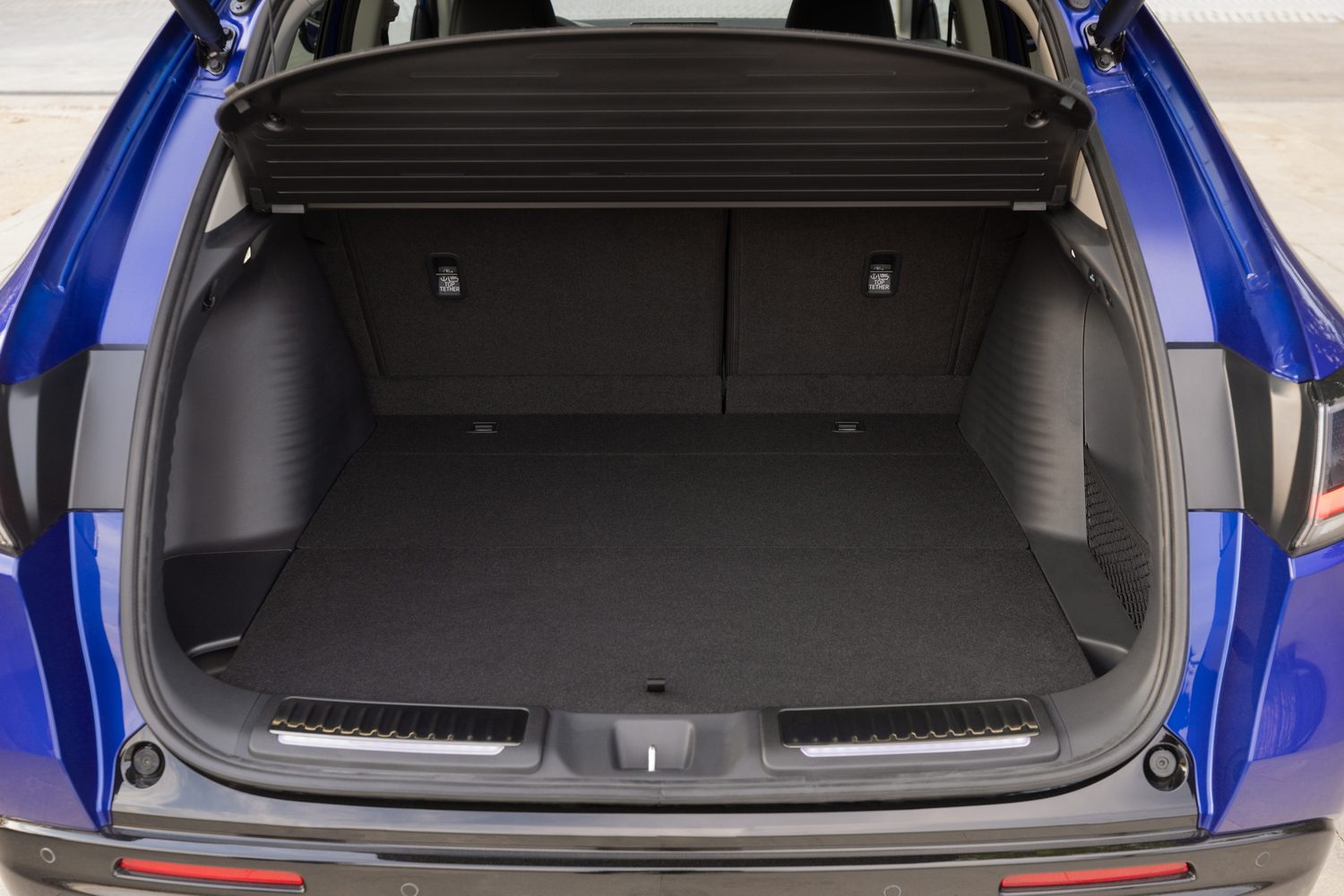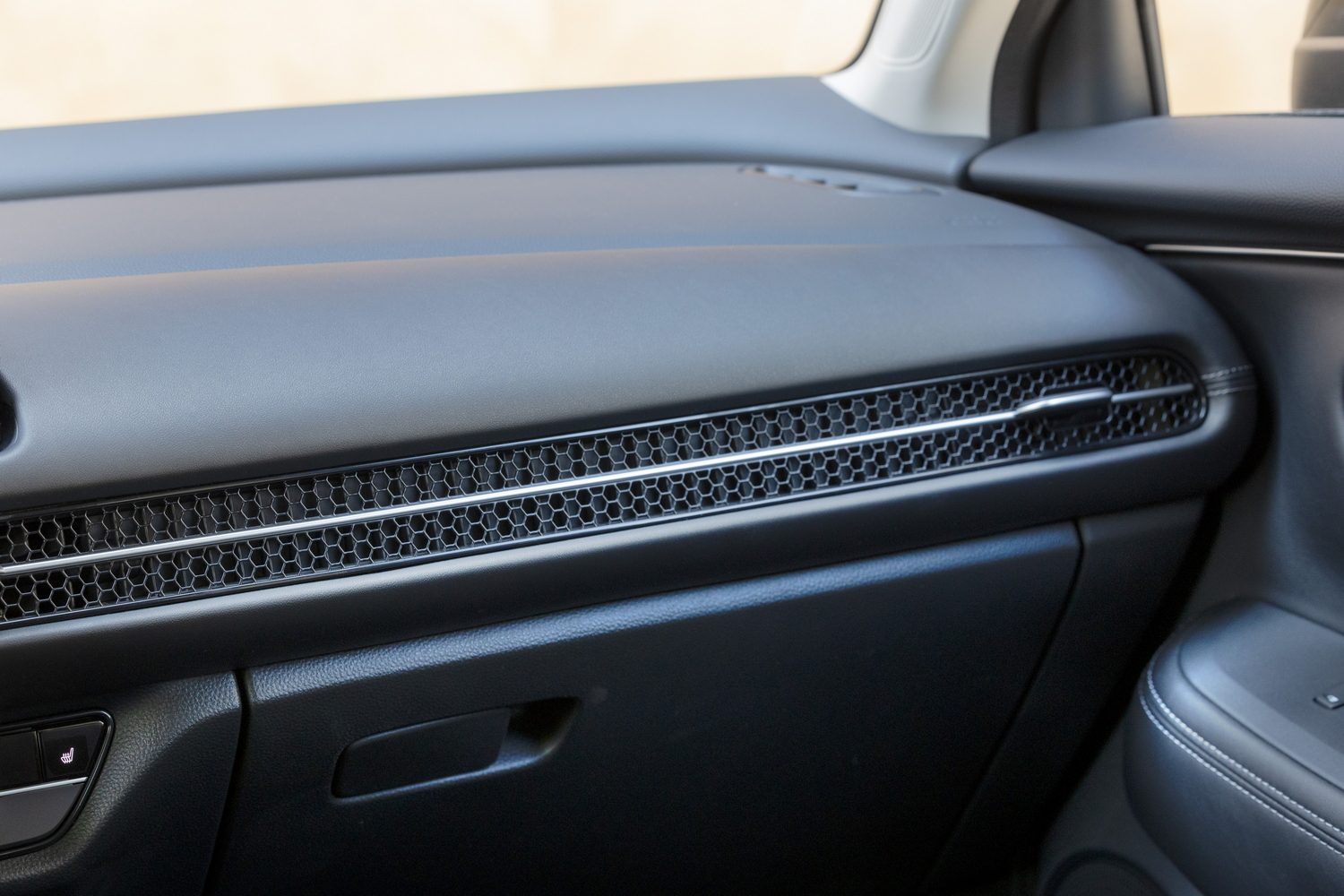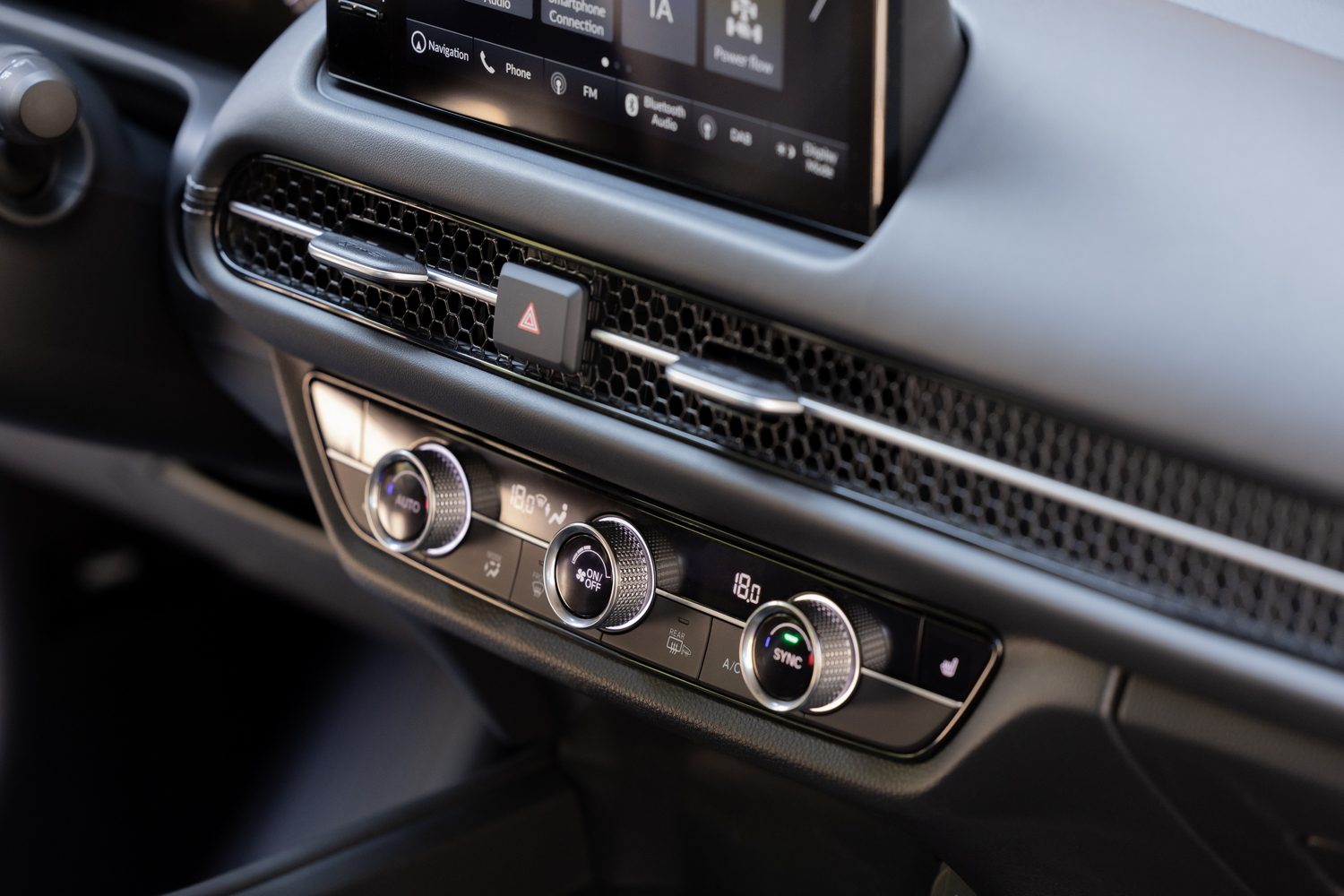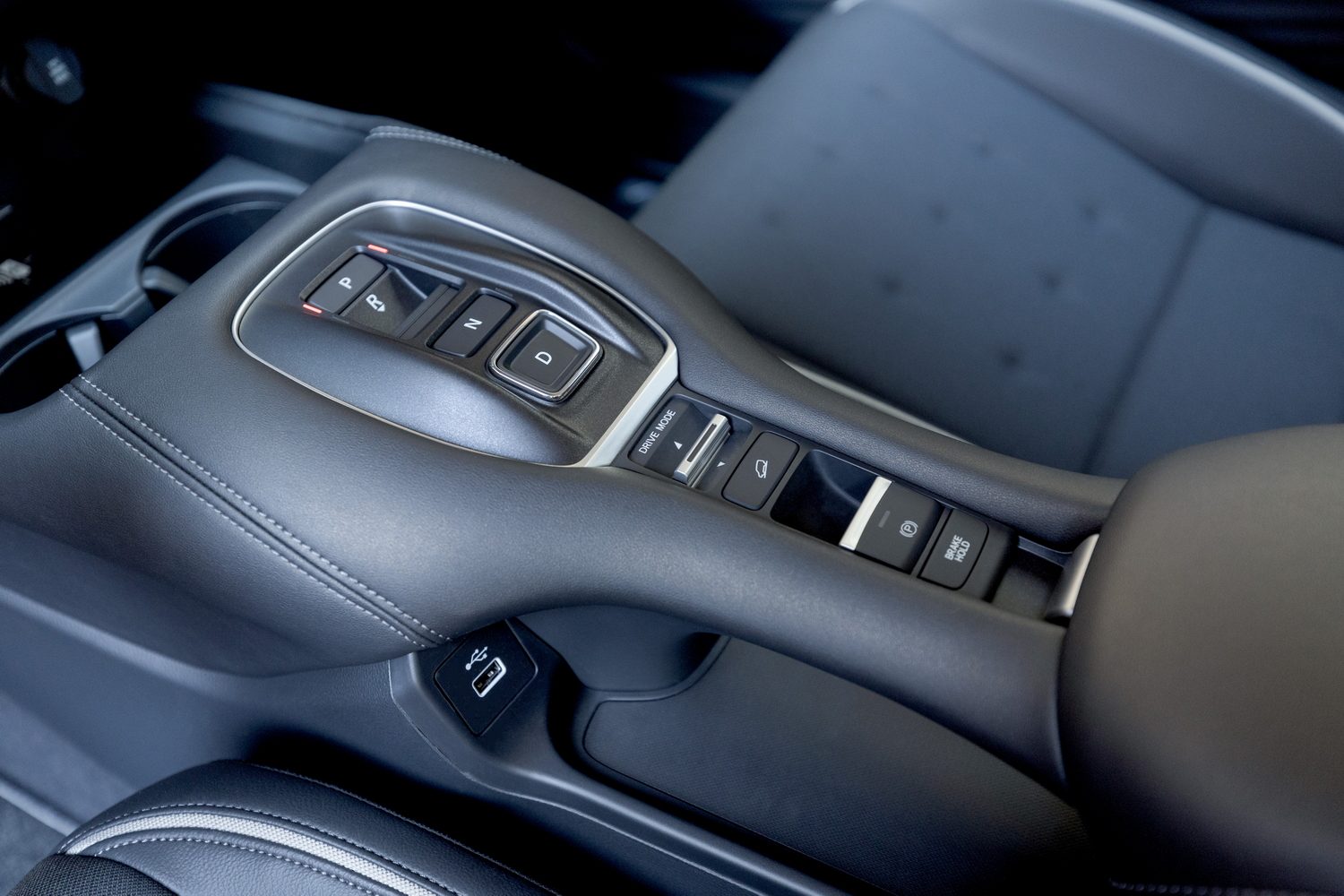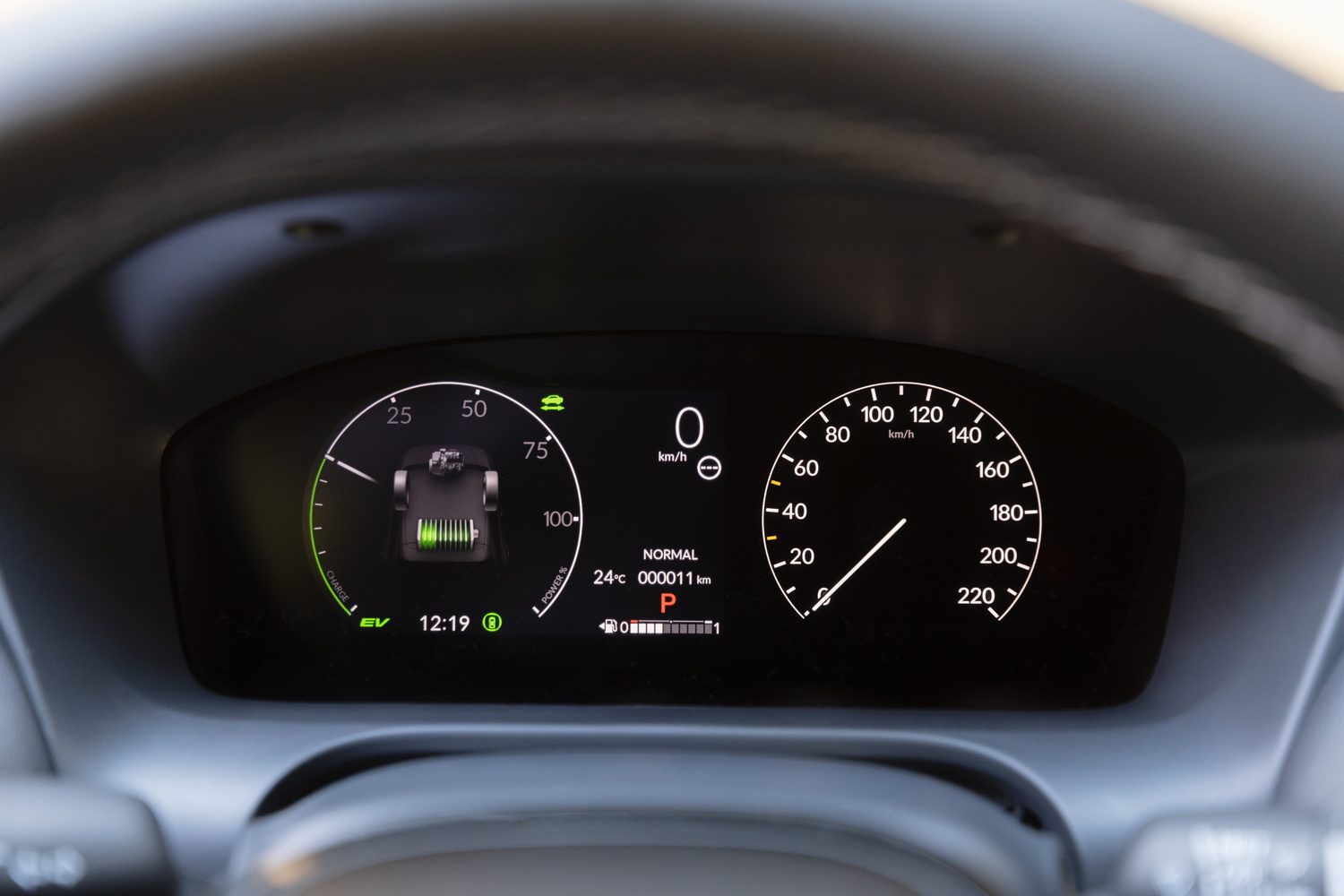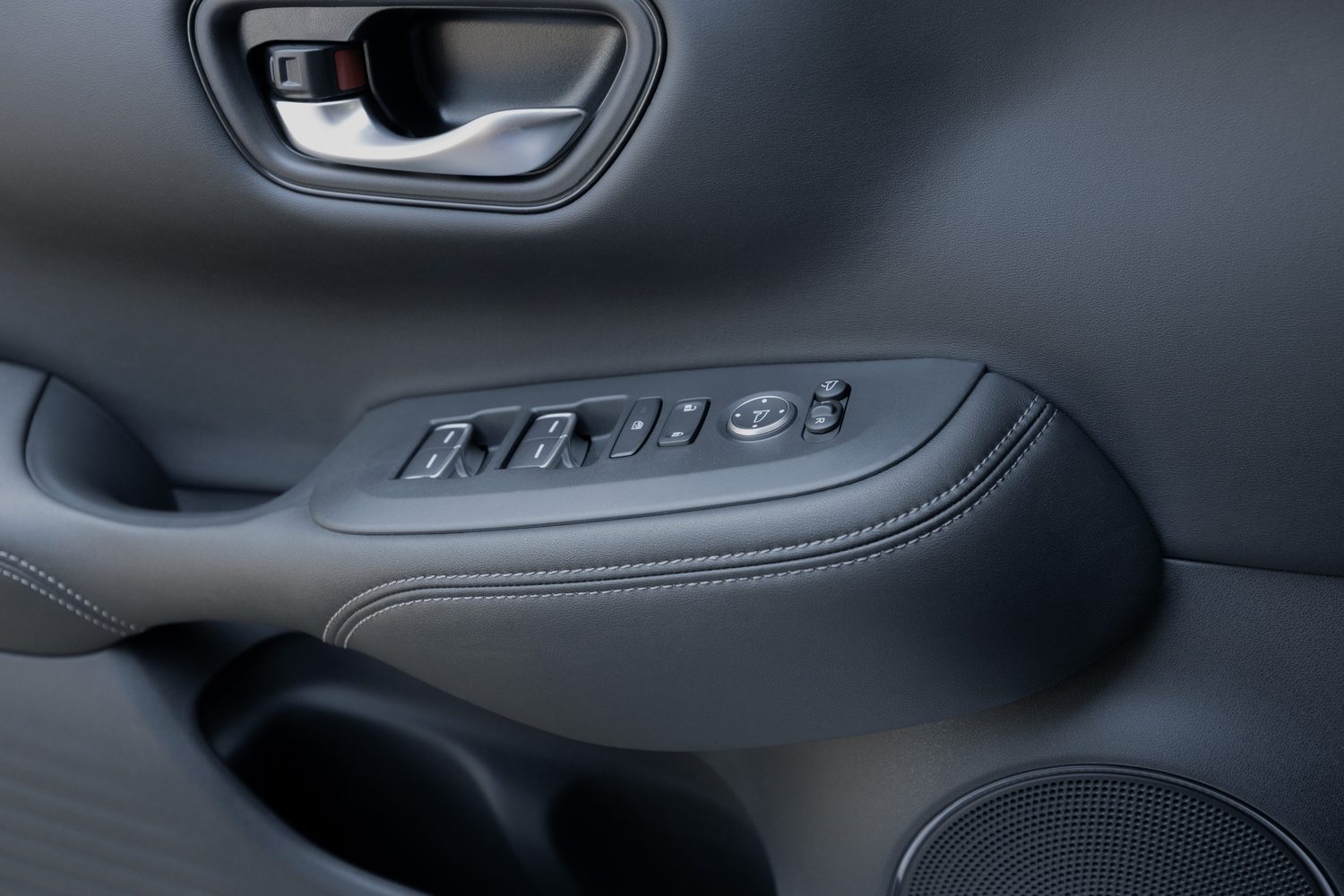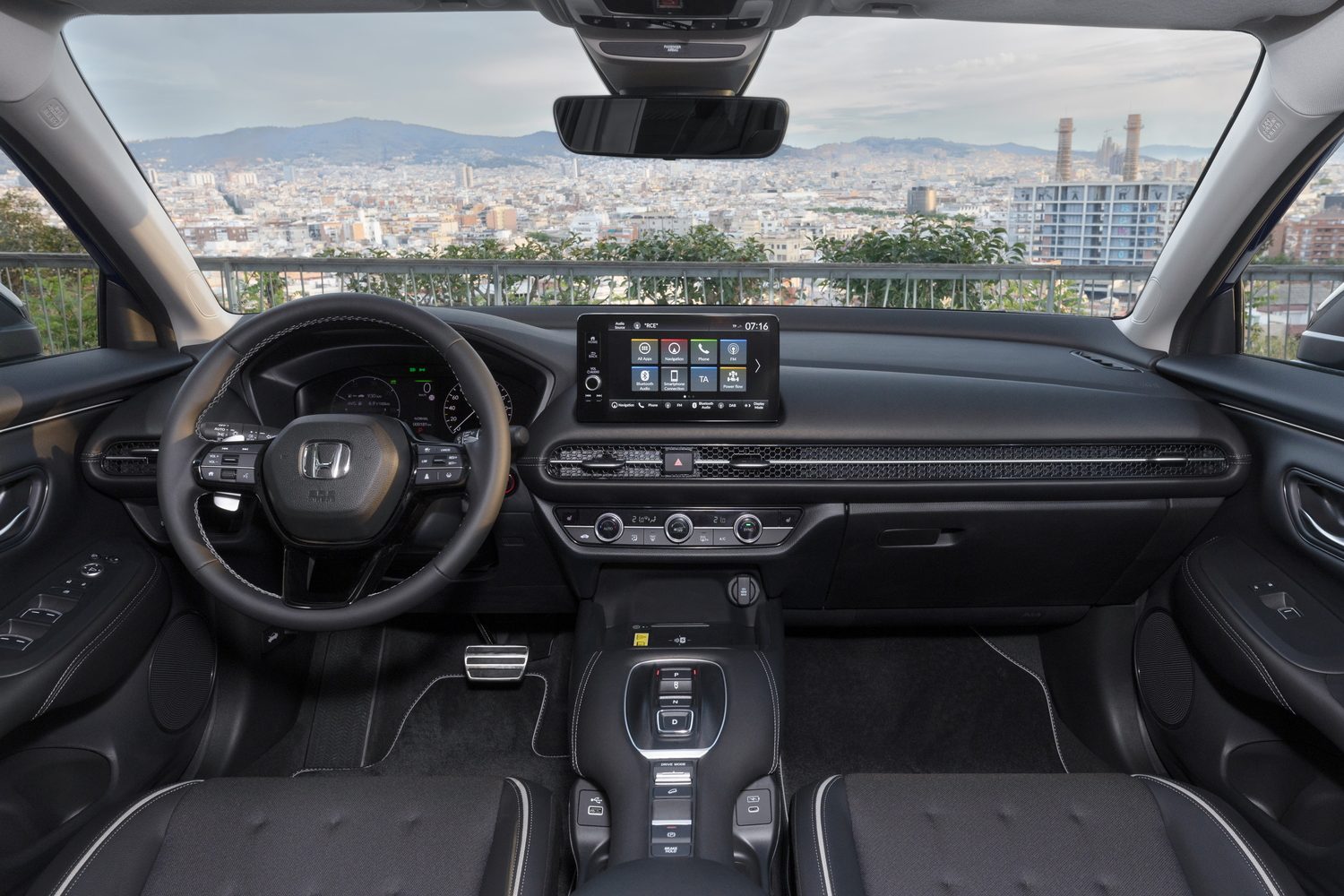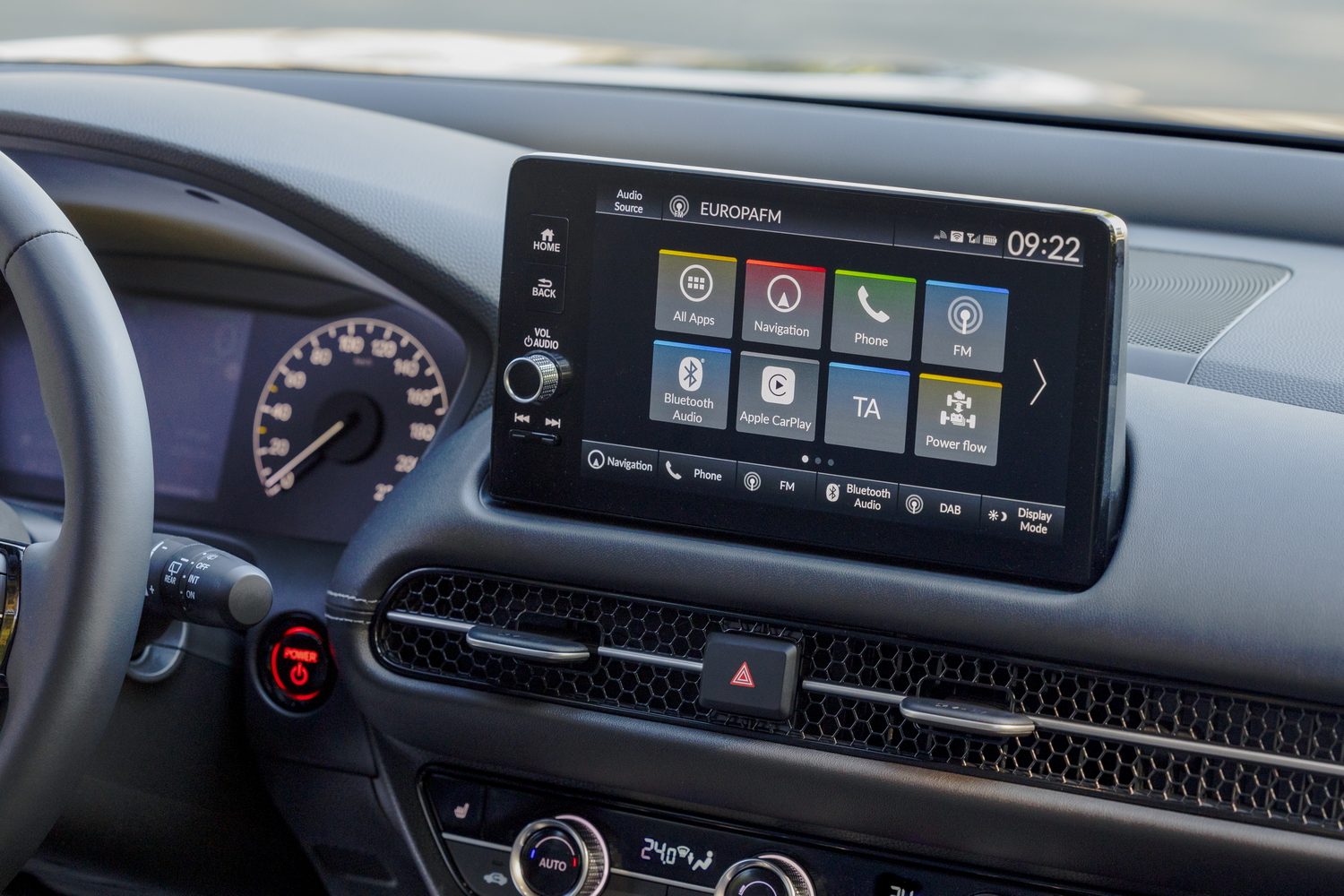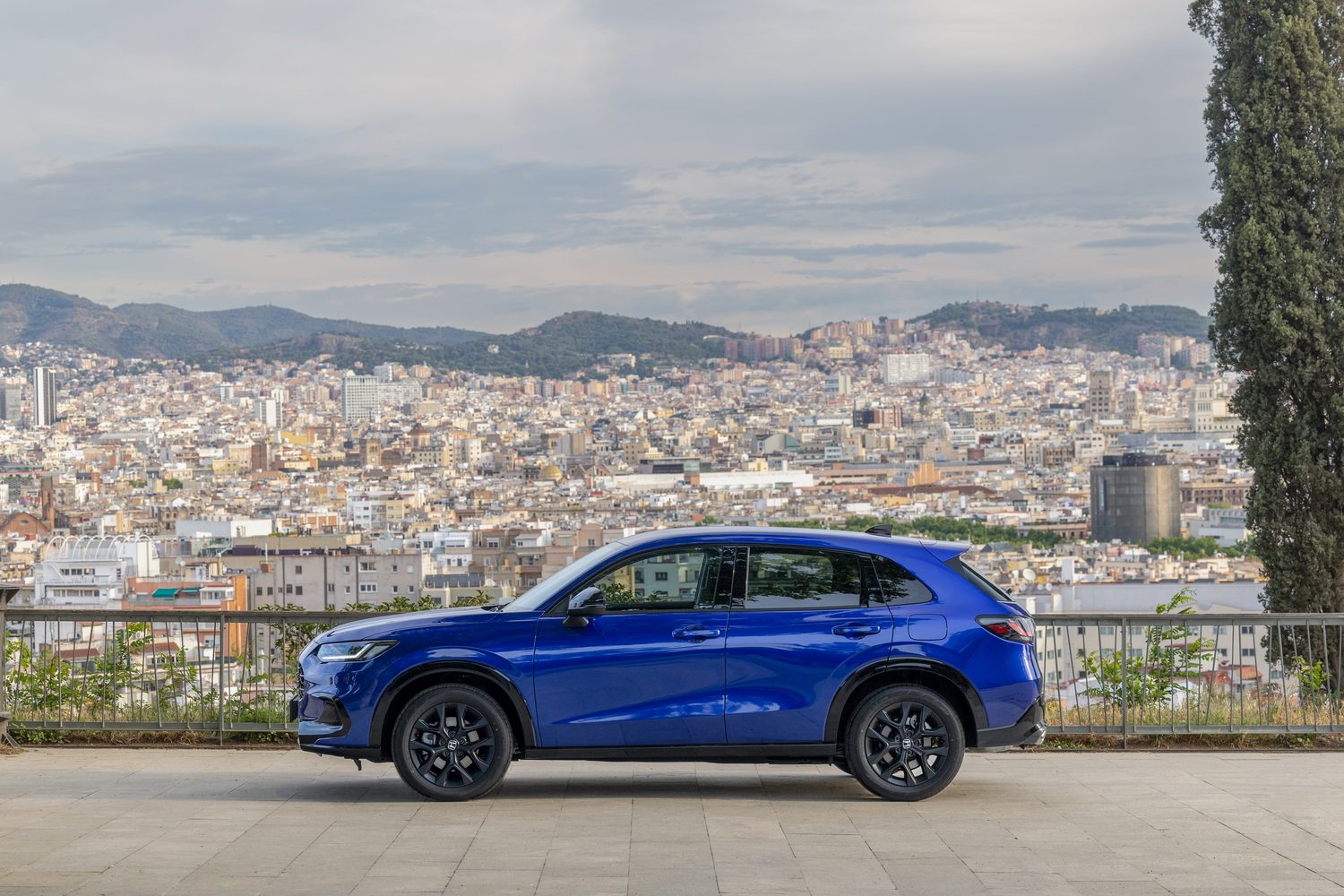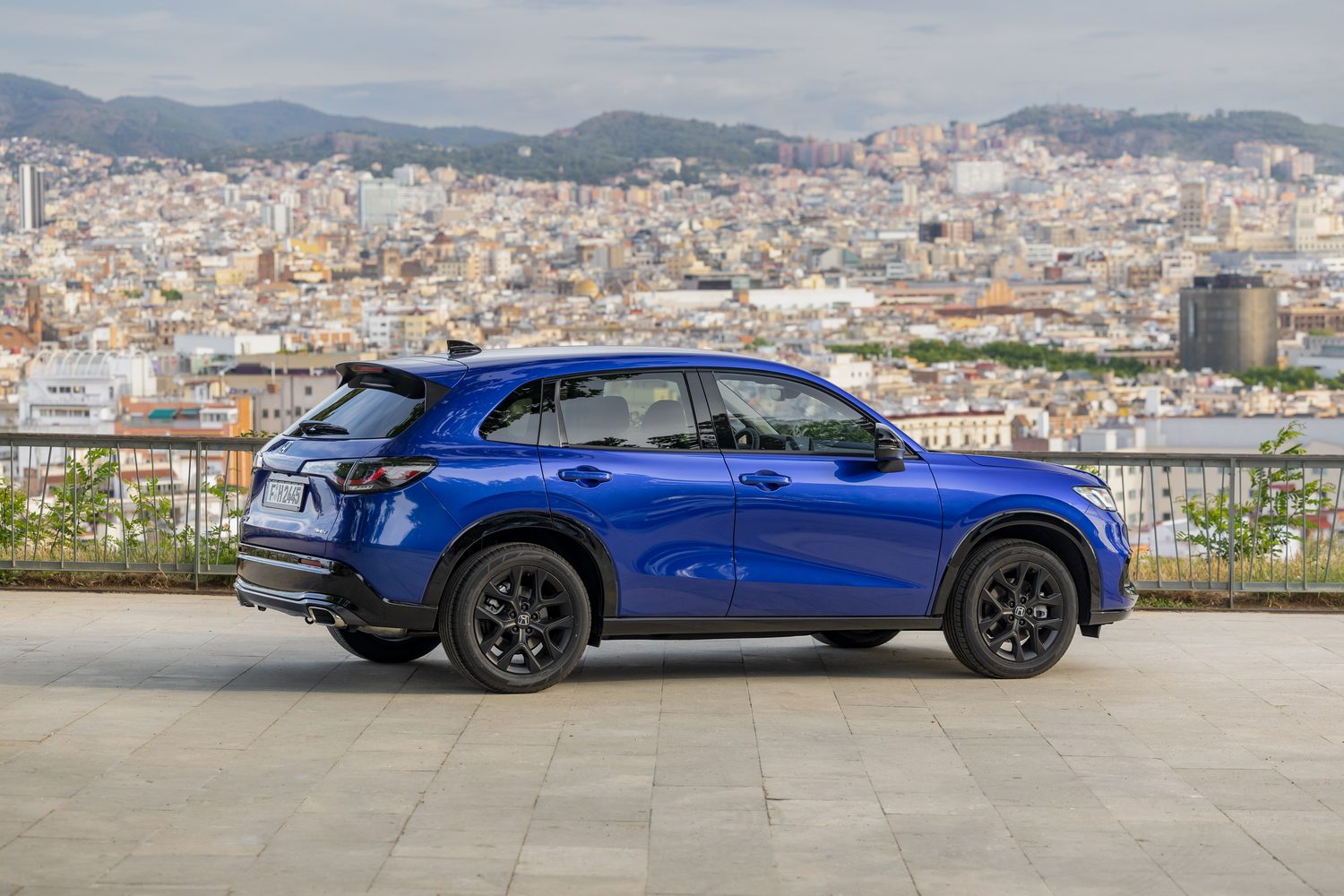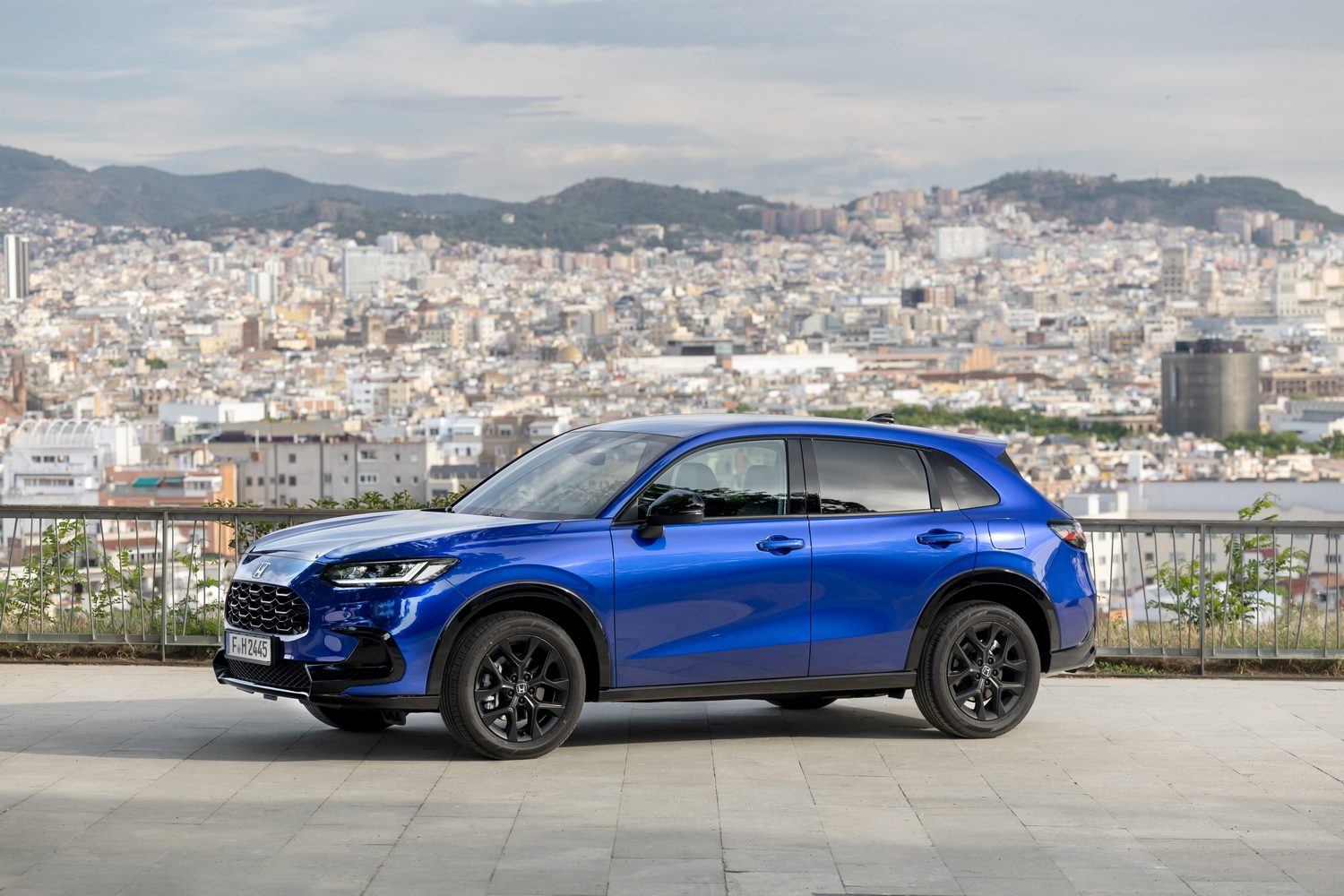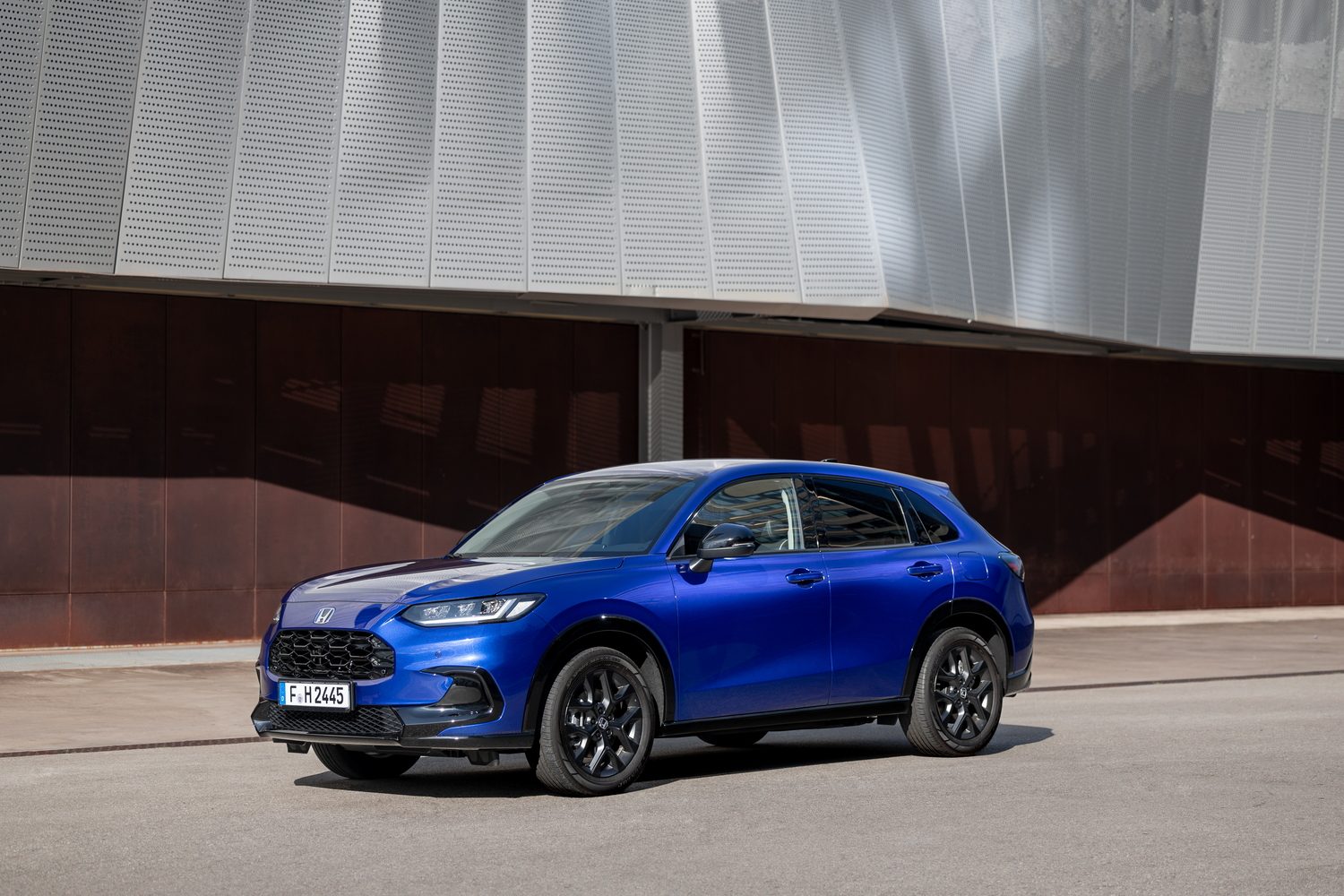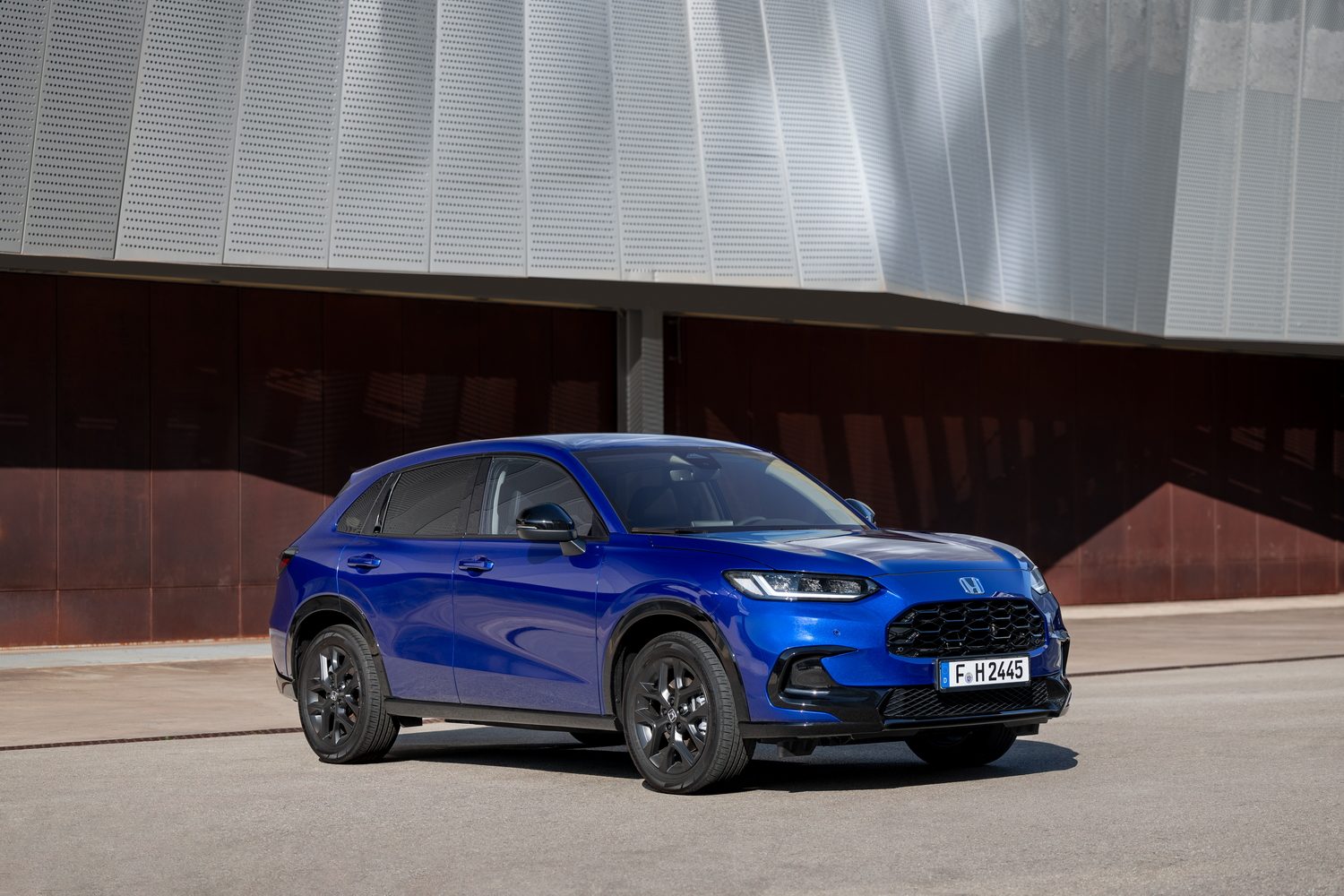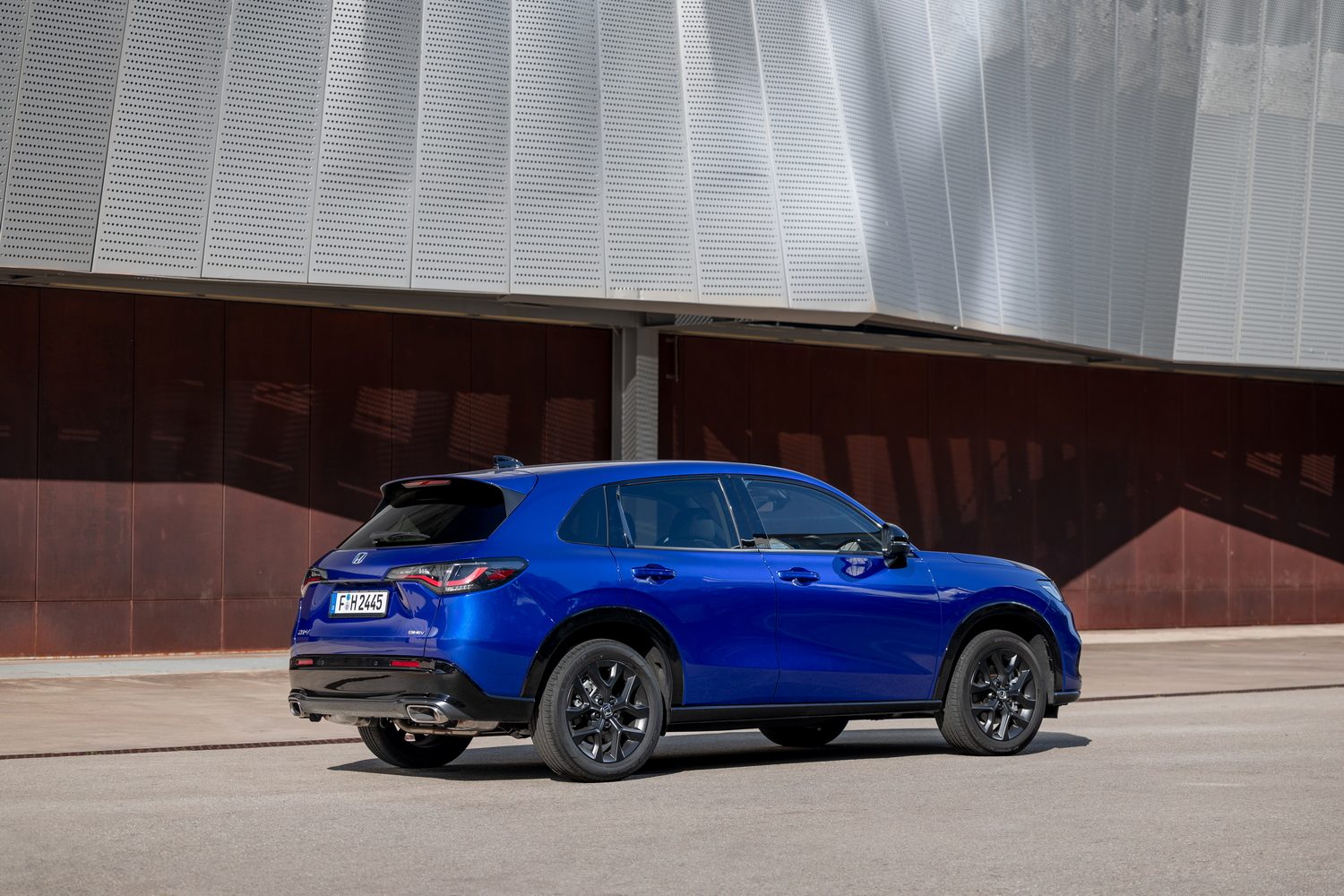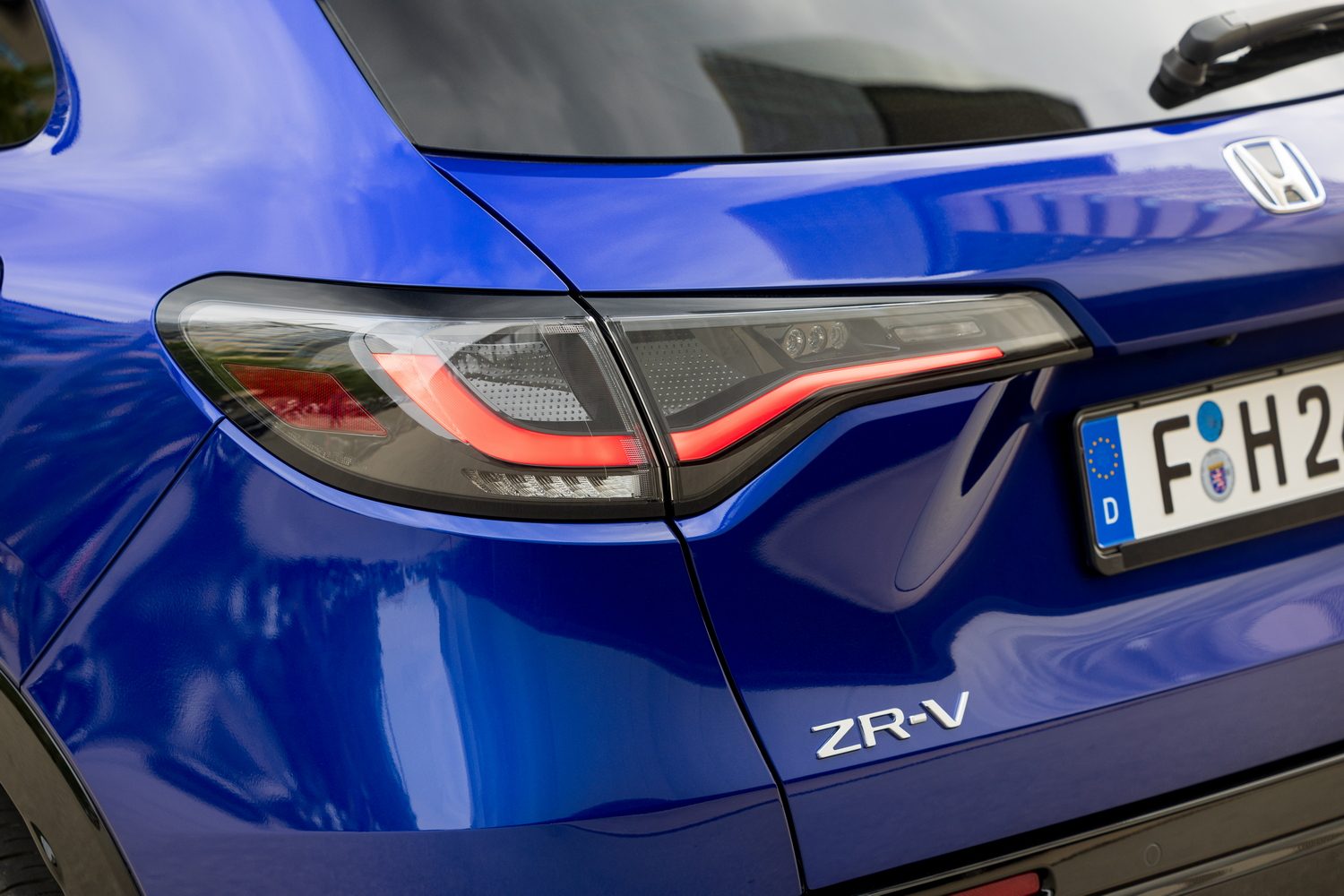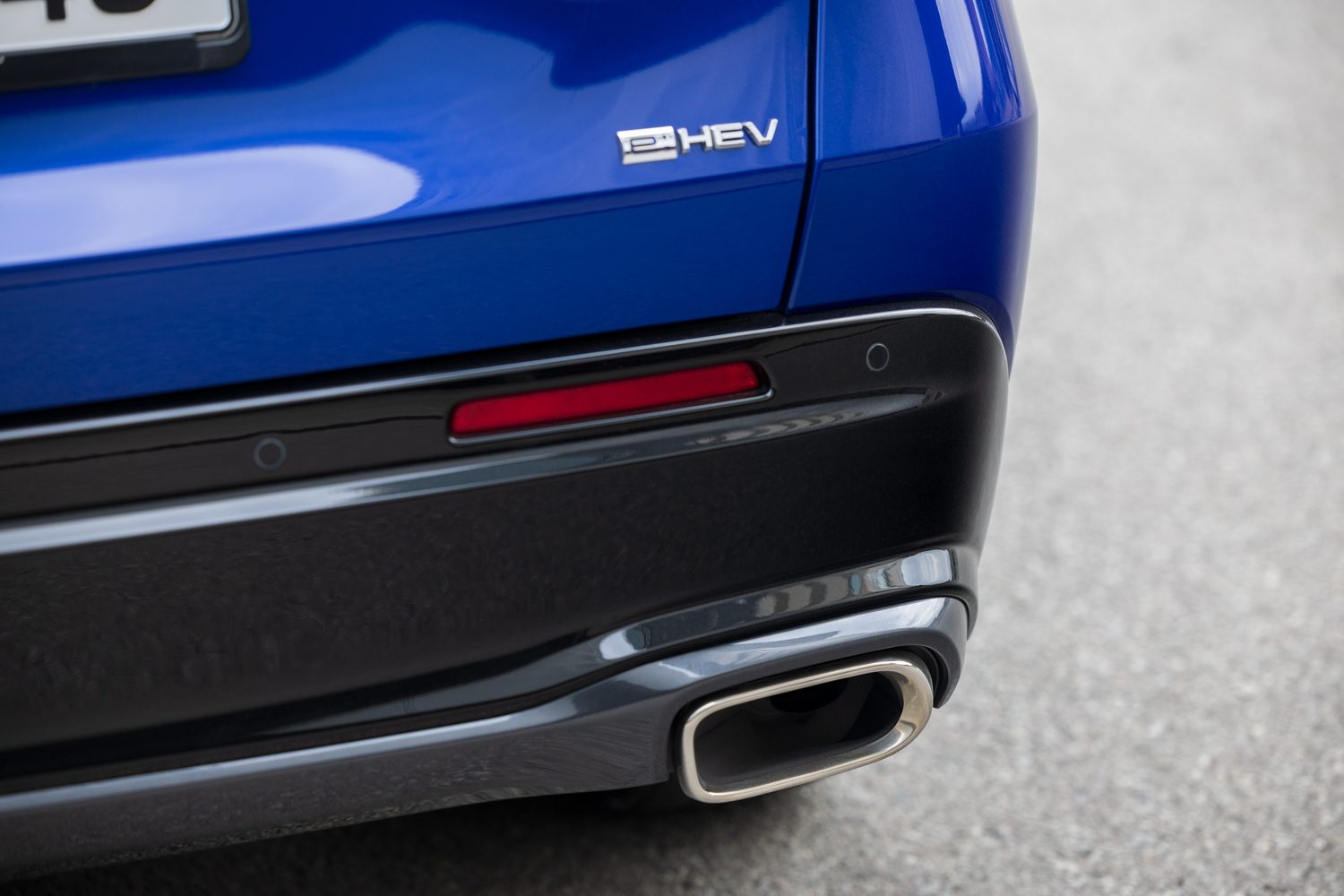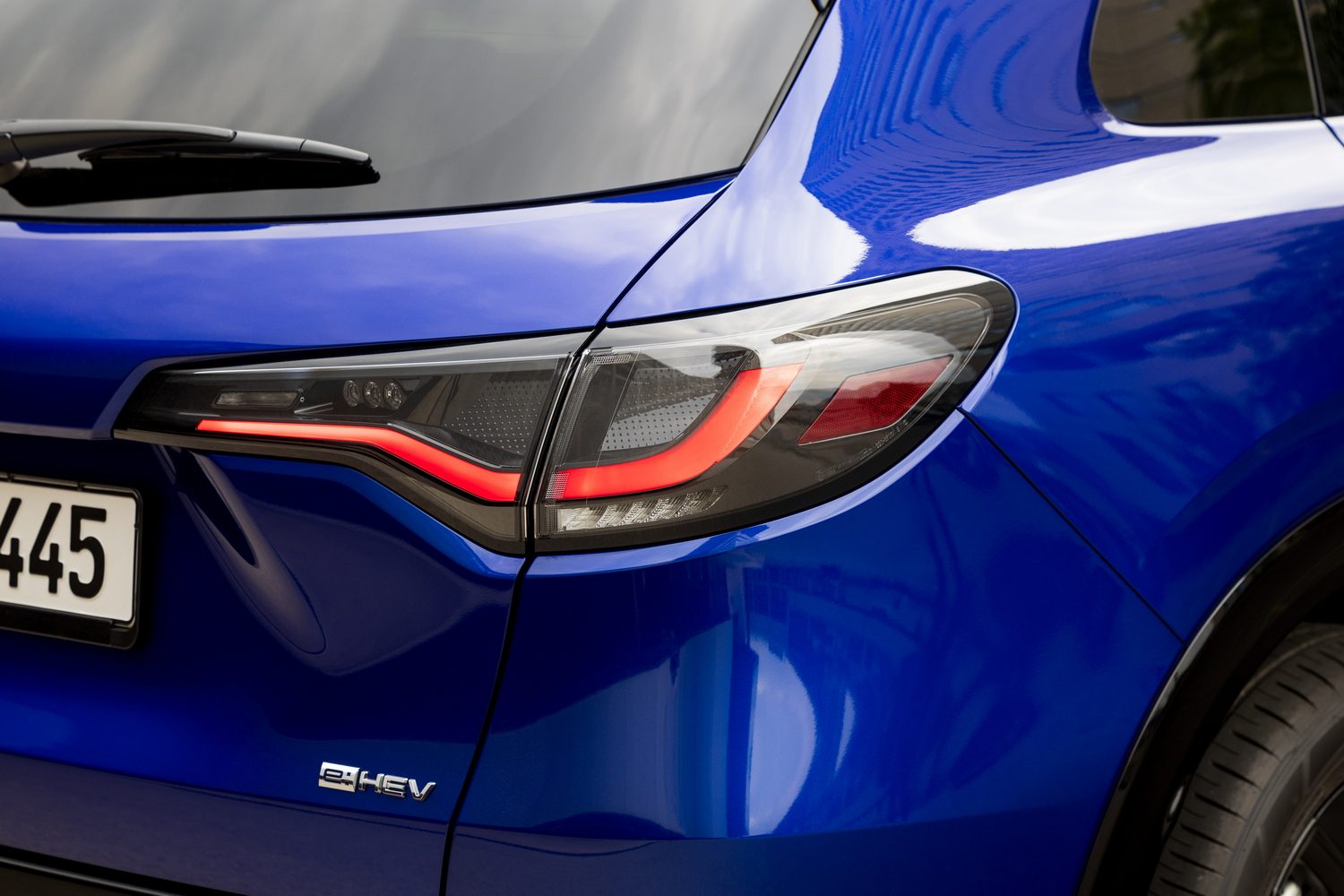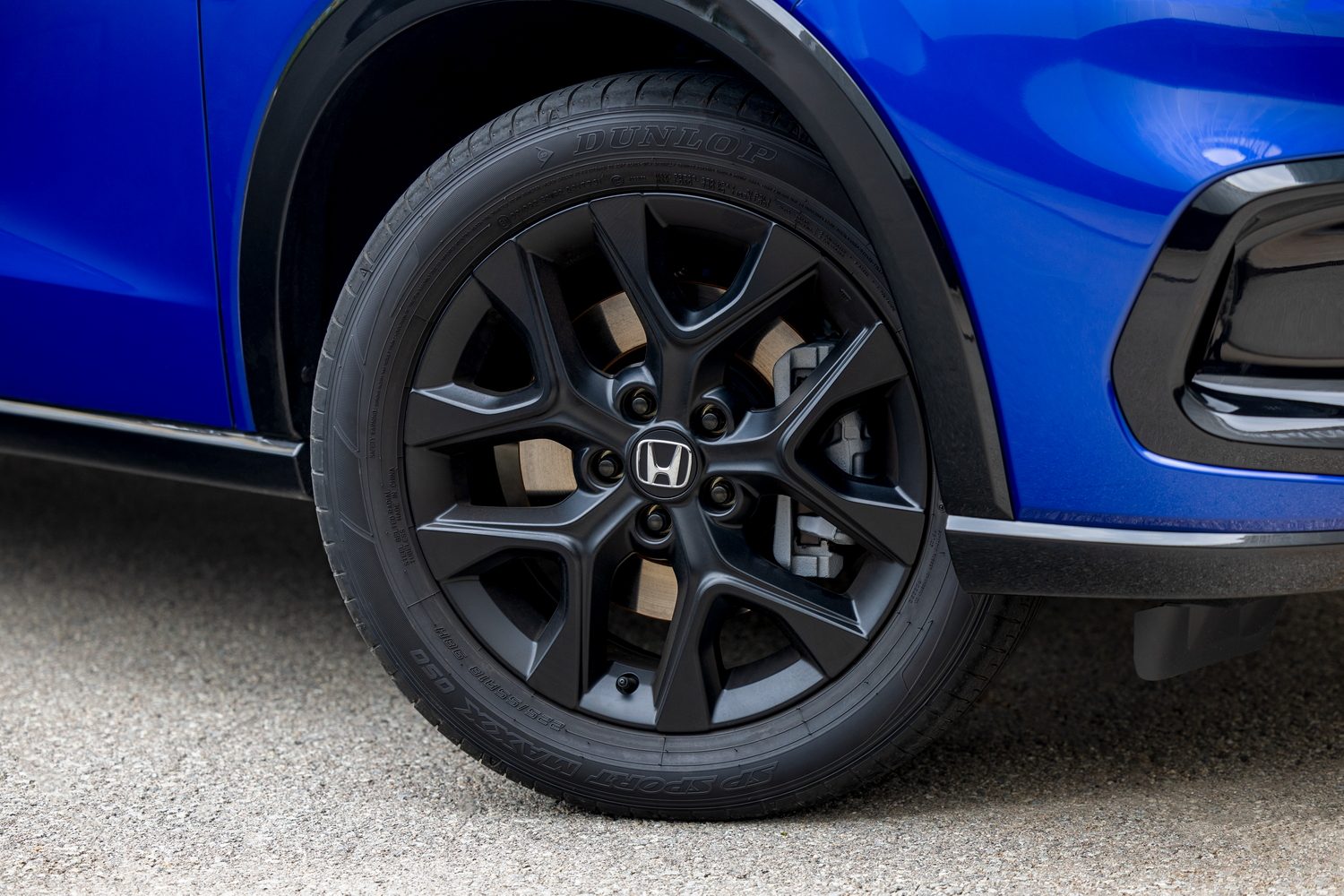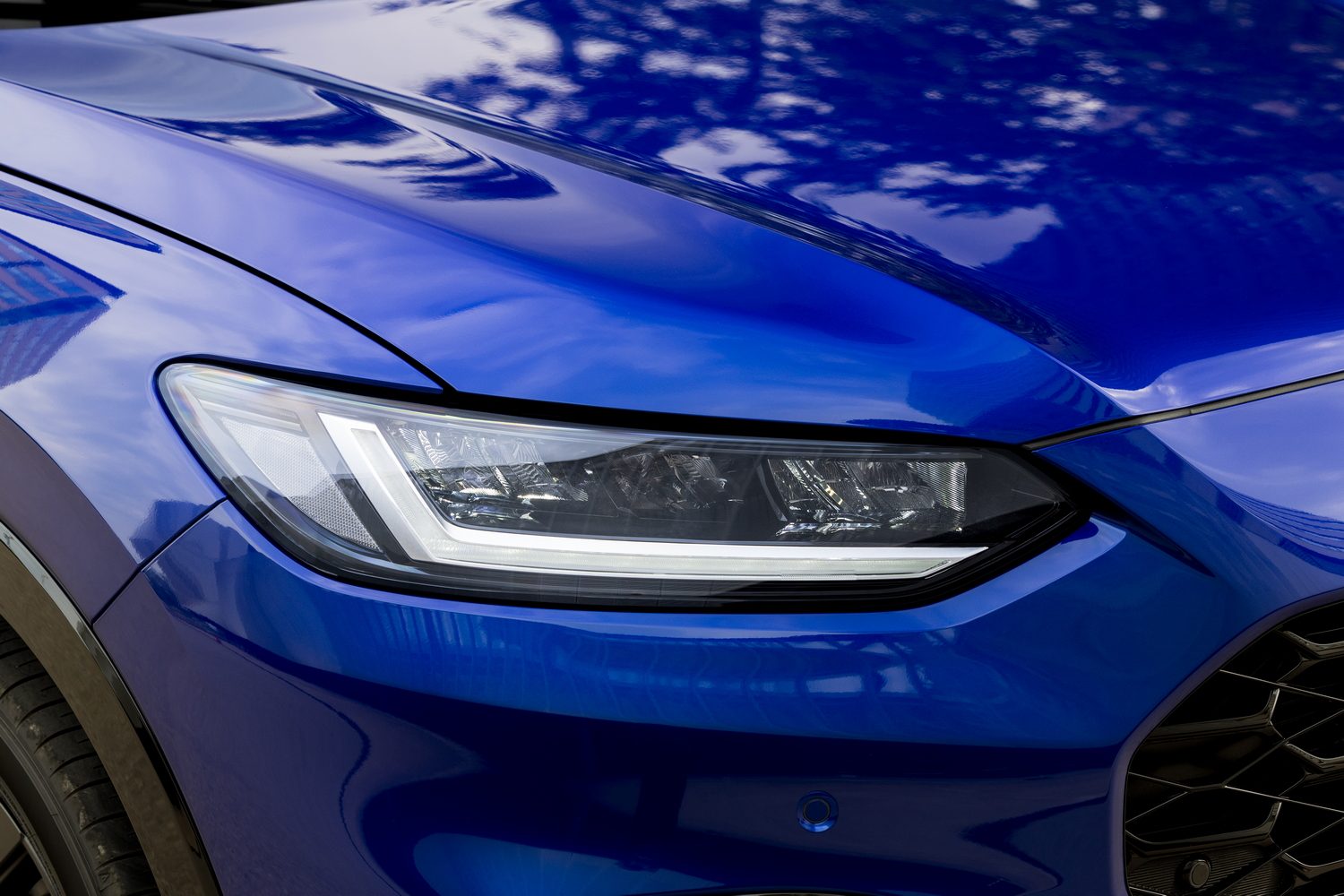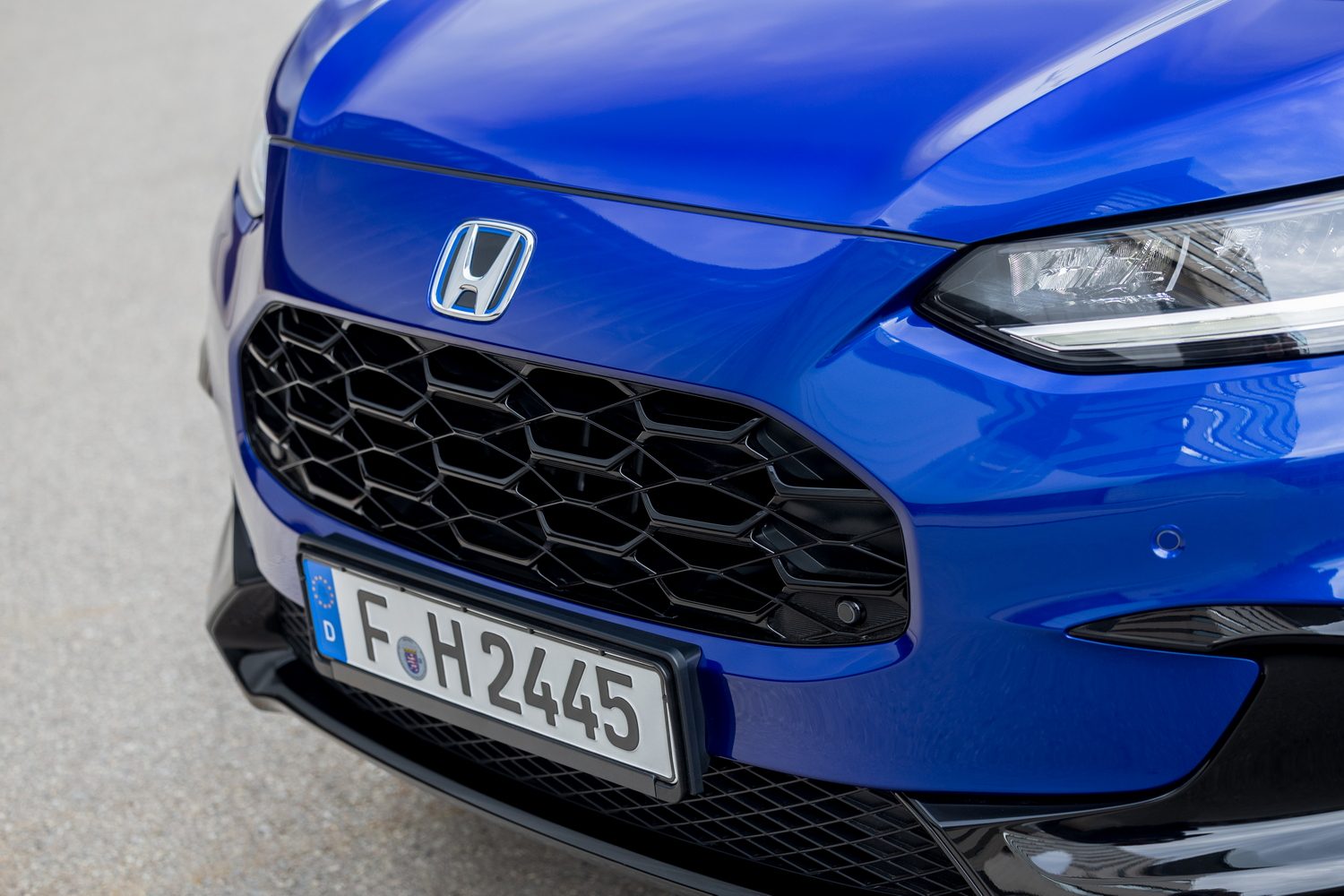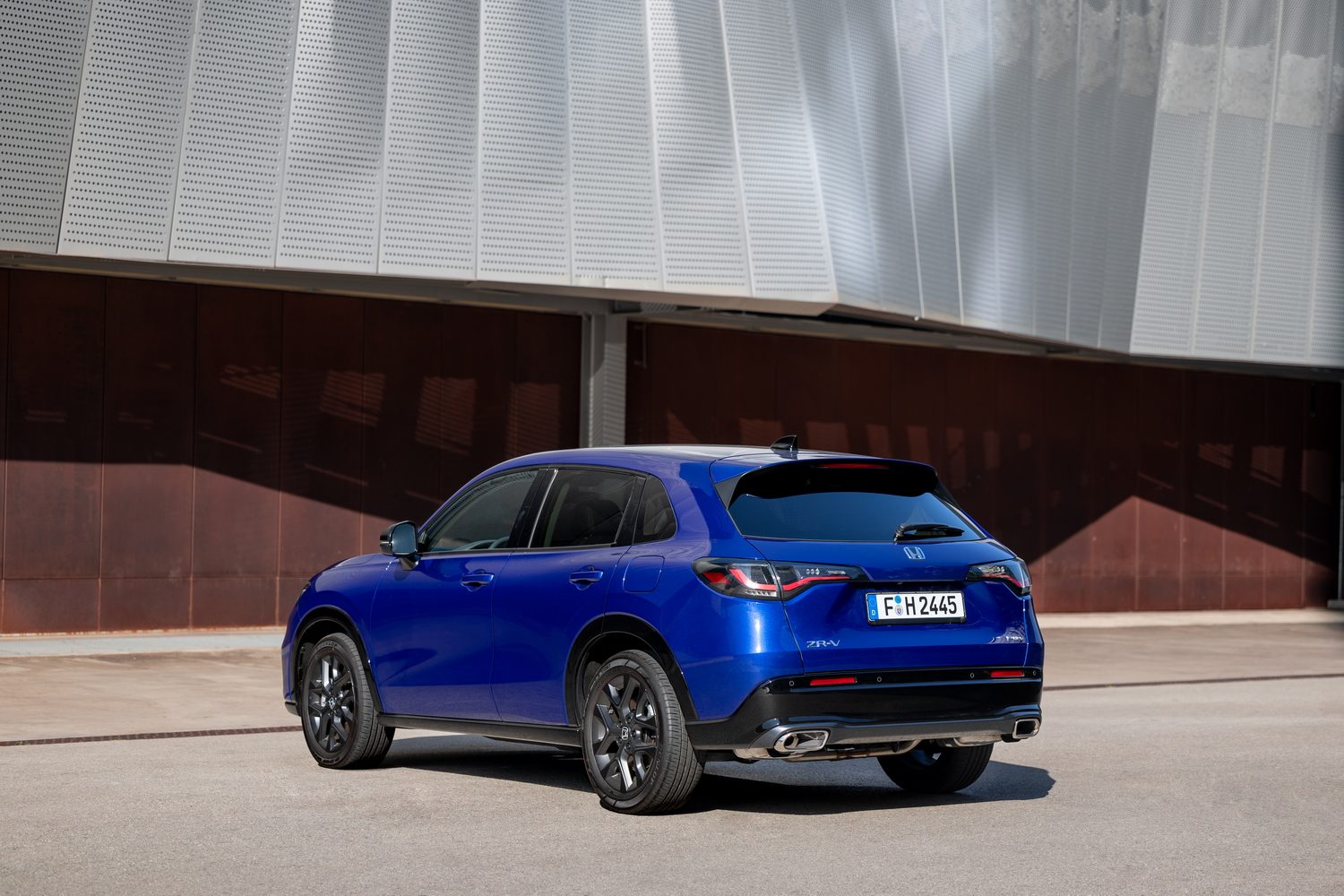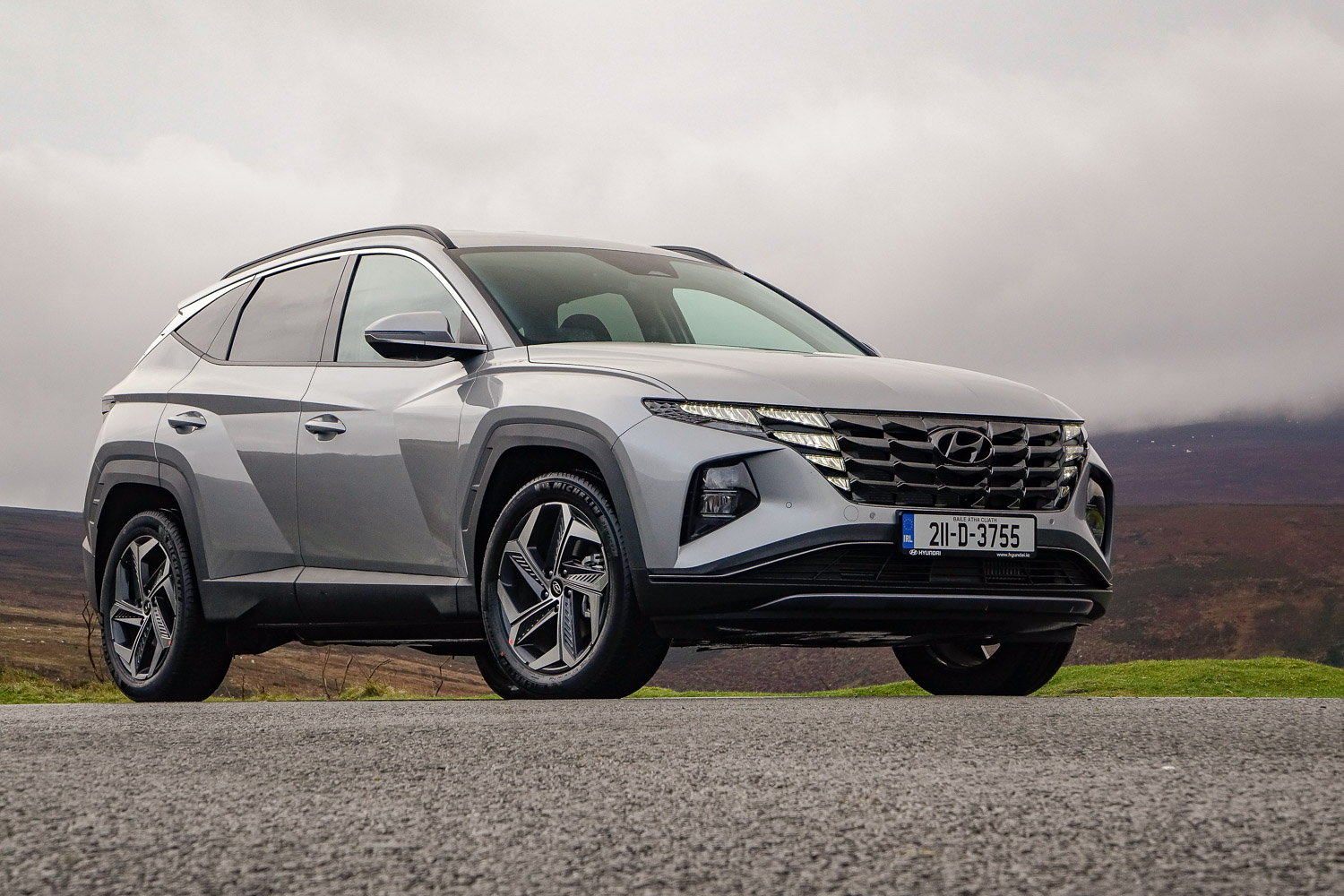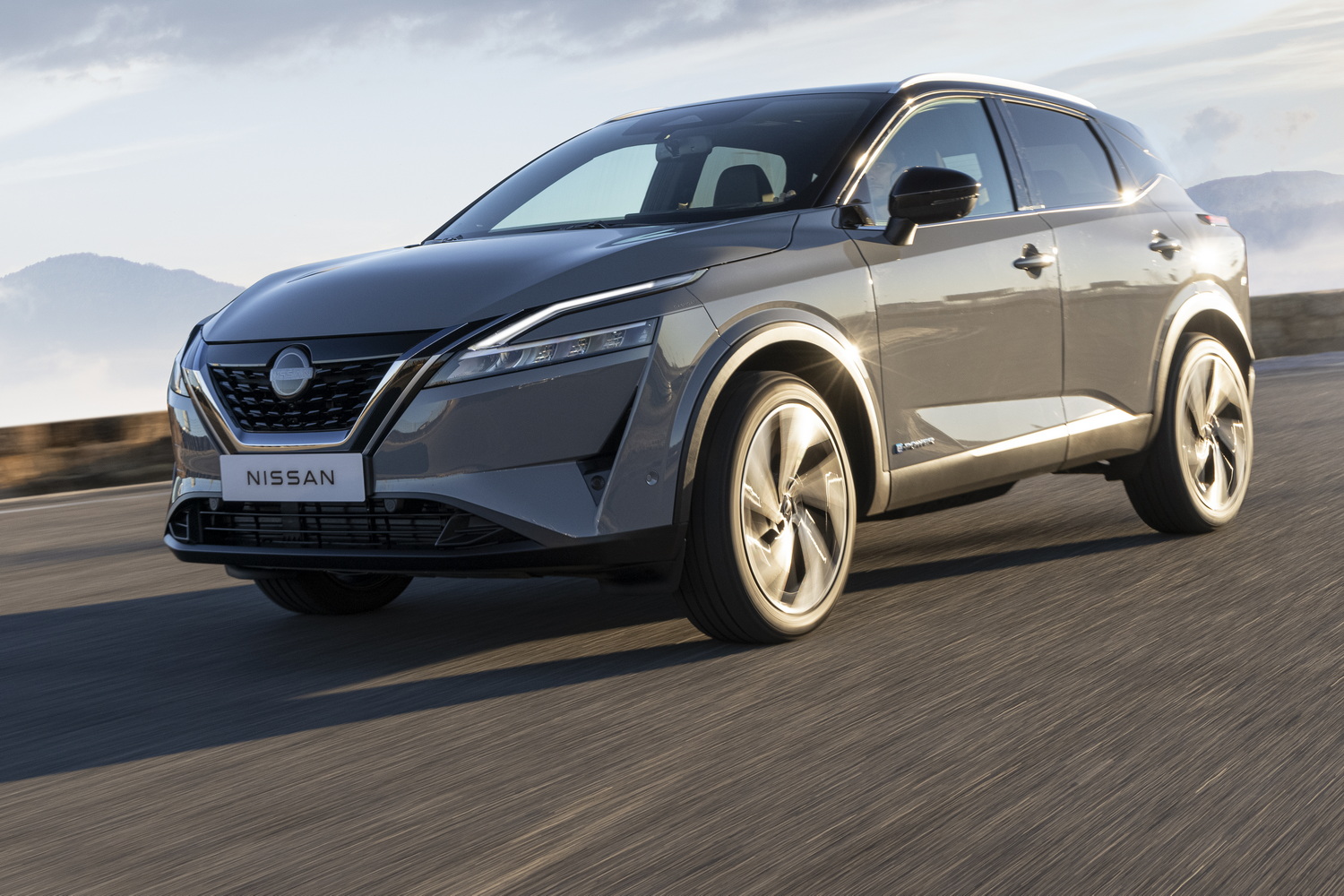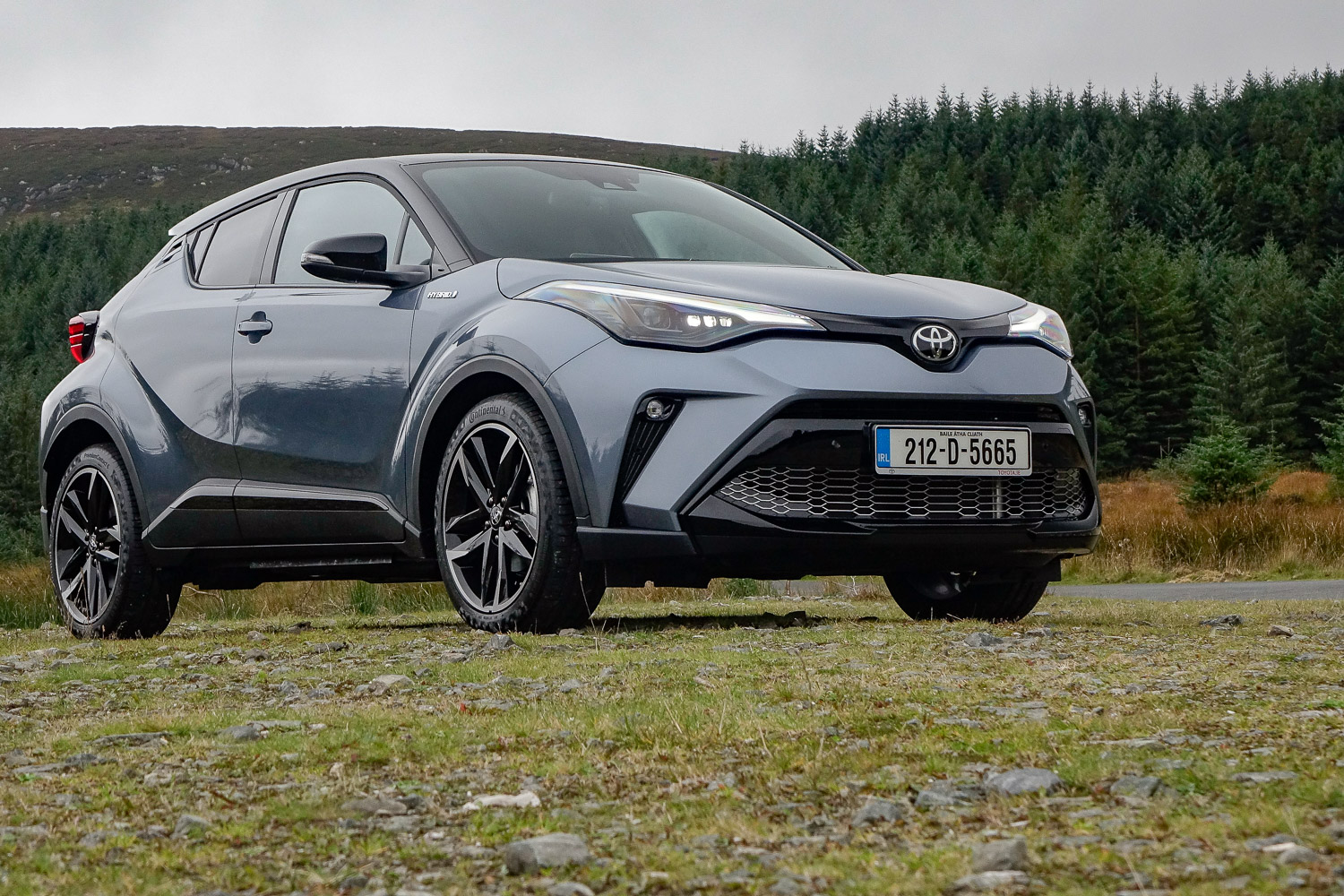Honda is slowly and quietly growing its product offering, and it's making massive steps forward, too. The styling is becoming more modern, cabin quality has improved across the range and the latest hybrid systems are as cleverly engineered as they are efficient. It's against this backdrop that Honda's latest SUV arrives, placing the Civic's brilliant hybrid system under the bonnet of a Qashqai-rivalling family crossover. In fairness, Honda's record at this sort of thing isn't great - the 1.5-litre hybrid system that worked so well in the Jazz was something of a disappointment in the HR-V - but has the Japanese company learned from its mistakes and perfected the recipe for this crucial new model?
In the metal
Keen students of the alphabet might be slightly surprised to hear this, but the ZR-V sits between the HR-V and the new CR-V in the Honda range, and that means it has stiff competition in the Irish marketplace. A little longer than the HR-V and noticeably shorter than the CR-V, which has recently grown to make room for the newcomer, it's a direct rival for the Hyundai Tucson and Nissan Qashqai.
That means this car has its work cut out. And though you should never judge a book by its cover, the styling alone is unlikely to put the Honda at the head of the pack. The ZR-V's design has clearly been influenced by that of its big brother, the recently updated CR-V. There's a kind of downturned grille that looks slightly too small for the car and gives it an appearance not dissimilar to that of a koi carp. It isn't ugly - to call it that would be much too unkind - but it's hardly beautiful. And from the back it's bland, with a nondescript rear end that singularly fails to excite, offend or provide any sort of emotional response. It looks as though a committee designed it, but at least it's unlikely to put the target market off too much.
And anyway, when you're in the cabin you can't really see the exterior. In fact, all you can see is the bonnet, which is quite finely sculpted when you stop and think about it. As is the dashboard. The design is clean, bordering on dull, but it's smart and the build quality is sound, just as it is in the latest-generation Honda Civic.
In fact, there's quite a lot of Civic influence in there, as the cabins are nigh on identical. Not that we're complaining too much, because the Civic's interior is a vast improvement on that of the old car, and it finally puts the Honda in the mix with the likes of Mazda, Volkswagen and Hyundai. Basically, the cabin is stylish enough and the build quality is exceptionally good, even though some of the materials feel a little cheap in places.
The technology in there is reasonable, too, with a clear and intuitive digital instrument cluster that can be customised using the buttons on the steering wheel. It's hardly ground-breaking tech, but it's easily a match for the equivalent systems in Fords and Toyotas.
However, the fact Honda insisted on putting an iPhone in the test car to ensure we could use the standard-fit Apple CarPlay smartphone integration was indicative of the biggest issue with the ZR-V's interior. Honda's latest touchscreen technology is miles ahead of the systems found in the old HR-Vs and Civics, but it's still behind the curve compared with the rest of the new car market. Hyundai and Kia have got it right, and even Toyota has improved dramatically of late, so the ZR-V's touchscreen feels more like the product of a budget brand than that of an established mainstream car maker.
That said, the screen's responses are sharp and the display itself is fairly crisp, which means it works well with the aforementioned smartphone coupling technology most customers will use most of the time. It also comes with a reasonable reversing camera, which makes life a little easier when you're backing up.
And while the technology might be a mixed bag, the cabin is certainly spacious. Four adults can sit in comfort, with ample space in the front and a huge amount of room in the back. Rear legroom is plentiful, and headroom is more than sufficient, too, although the tallest passengers might prefer ZR-Vs that are not fitted with the panoramic sunroof, which eats into rear headroom somewhat.
Unfortunately, that isn't the biggest issue with the ZR-V's practicality, because when you look even further back the problems really begin. In this high-end Advance model, the boot accommodates 370 litres, which is quite small by the standards of the class. You get more space in a Ford Focus, and a Nissan Qashqai e-Power offers a massive 100 litres more boot volume, while even the Civic hatchback is more capacious. Admittedly, the lowlier Sport model has an extra 10 litres of capacity, but that isn't enough to make a noticeable difference. Nor is it enough to make the car as spacious as its rivals. The Volkswagen T-Roc has a 445-litre boot, for example.
Driving it
Although ZR-V buyers will get a choice of trim levels, there's just one engine on offer, and that's the 2.0-litre hybrid that's essentially the same as found in the Honda Civic. It's a very cleverly engineered system, essentially using the 2.0-litre, four-cylinder petrol engine as an on-board power station for the electric motor, which drives the wheels most of the time. Only at motorway speeds will a clutch engage and the petrol engine will power the wheels directly.
As a result, the ZR-V doesn't really have a gearbox as such - the electric motor doesn't need one and the petrol engine only powers the wheels directly at certain points - but naturally there are buttons for selecting forward, reverse, neutral and park. And with just two pedals, it effectively works like an automatic.
It behaves like one, too, because Honda has insisted on giving the engine simulated 'shift points' where the engine revolutions drop as they would in a gear shift. It seems like an odd choice when the company had the chance to make this system seamless, but Honda says it gives customers a feeling of engagement. And anyway, refinement is not among this powertrain's problems.
As in the Civic, the ZR-V is incredibly quiet most of the time, with most of the driving dealt with entirely by the electric motor. When needed, the petrol engine steps in to keep the battery charged, but that's all. Only on the motorway is there a transition from electric to petrol power, and that's almost imperceptible. Naturally, there's a bit more vibration than there would be with a pure electric powertrain, but only a little, and compared with other hybrids it's exceptionally smooth.
That said, putting your foot down does elicit a bit of a roar, but the eight-second 0-100km/h time is as unremarkable as it is unimportant, and though the car feels quite punchy at low speeds thanks to the potent electric motor, it seems to run out of puff a bit at higher speeds. And the difference in acceleration between middling accelerator inputs and full throttle seems to be fairly minimal. Basically, a light touch yields more refinement and only marginally less performance.
It'll also allow you to get closer to the ZR-V's official fuel consumption figure of less than six litres per 100km. Such efficiency isn't massively impressive - diesel SUVs of this size might drop below five litres per 100km - but it's on a par with the Nissan Qashqai e-Power, which is set to be the ZR-V's nearest rival and uses a similar hybrid system. Naturally, such systems are better suited to urban and suburban environments than motorways, so those who drive around town are likely to feel the benefit of Honda's tech slightly more than those who seem to spend their lives on Ireland's motorway network.
Perhaps surprisingly, though, the ZR-V is arguably at its most impressive on a country road, rather than a city street or an empty motorway. We don't normally expect family-sized Hondas to be particularly brilliant in the bends, but they can often hold their own, and the ZR-V is no exception. The steering feels a bit lifeless at times, but the body lean in corners is well controlled and it feels really solid and stable, which inspires plenty of confidence. It doesn't have the outright agility of a Mazda CX-30, for example, but it really isn't bad at all.
It's also fairly comfortable, with a ride that's mature rather than majestically relaxing, but it's easily above average for cars in this class. Admittedly, our test took place on relatively smooth European roads, so a full verdict will have to wait until we can get the car on more representative asphalt, but early signs are good. It doesn't smash into potholes too vigorously and more minor bumps are dealt with quickly and efficiently. It doesn't iron them out entirely, but they aren't too intrusive, and they certainly don't unsettle the car.
For all this, though, it's clear the ZR-V has been set up for suburban environments, with decent visibility and light steering, as well as reasonably compact dimensions. It's a bit too big to be a true city car, and though it can do a job there, you sense Honda has built the ZR-V for the school run, shopping and other around-town chores.
Certainly, there isn't all that much in the way of off-road capability. Honda has given the ZR-V a bit of ground clearance and there's hill descent control as standard, but there's no all-wheel-drive option. There is, however, a snow mode that's designed to tailor the throttle response to low-friction surfaces and this, combined with proper winter tyres, could make the ZR-V capable enough when the snow falls. Not that many Irish drivers change their tyres seasonally.
What you get for your money
Gowan Auto - the Irish distributor for Honda, hasn't yet announced prices for the ZR-V, so we'll update this page when we know more.
Summary
In many ways, the new Honda ZR-V is a great family SUV. It drives well, the hybrid system is first-rate and the cabin quality is very solid indeed. Yet there are a few flaws that prevent it from topping the class, including a relatively small boot, so-so infotainment technology and the underwhelming design. As a result, it seems destined to be a bit of a niche player, too fundamentally compromised to be considered a genuine all-rounder, but loved by those with a lifestyle to which it's suited.

